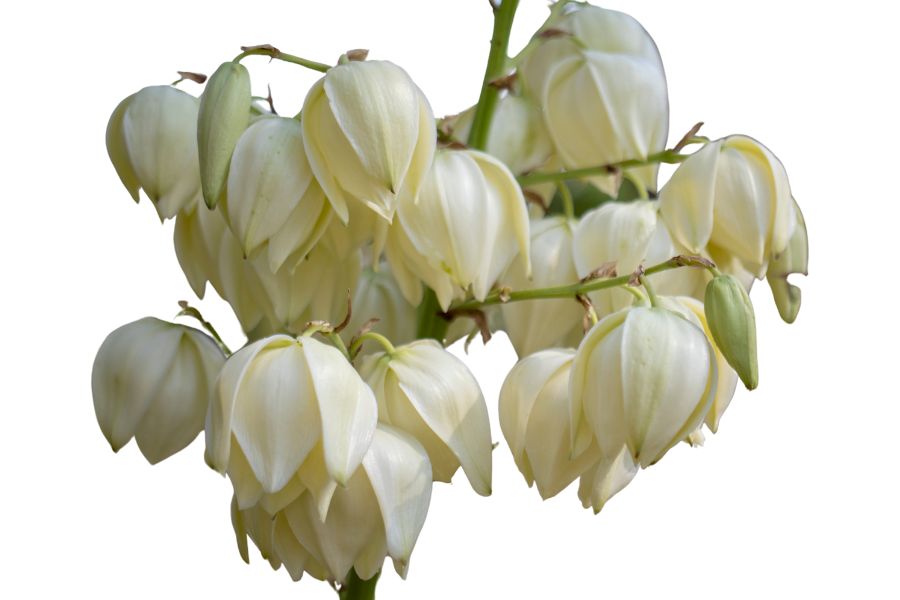The diverse habitats of Florida support a wide range of edible plants ready to be foraged. Elderberry shrubs grow along forest edges, while lamb’s quarters spring up in disturbed soils with their tender leaves. These common plants barely scratch the surface of what Florida’s wild areas have to offer.
Moving through Florida’s open fields and shaded forests, you might also find purslane spreading close to the ground. Its crisp, edible leaves are easy to miss if you are not paying close attention. Many more edible plants grow in Florida’s wild spaces, waiting for foragers who know how to find them.
Florida’s natural areas hold far more edible plants than you might expect. Elderberry, lamb’s quarters, and purslane are only a few that show how abundant the land can be. When you know where and how to look, it becomes much easier to come back with an impressive collection of wild foods.
What We Cover In This Article:
- The Edible Plants Found in the State
- Toxic Plants That Look Like Edible Plants
- How to Get the Best Results Foraging
- Where to Find Forageables in the State
- Peak Foraging Seasons
- The extensive local experience and understanding of our team
- Input from multiple local foragers and foraging groups
- The accessibility of the various locations
- Safety and potential hazards when collecting
- Private and public locations
- A desire to include locations for both experienced foragers and those who are just starting out
Using these weights we think we’ve put together the best list out there for just about any forager to be successful!
A Quick Reminder
Before we get into the specifics about where and how to find these plants and mushrooms, we want to be clear that before ingesting any wild plant or mushroom, it should be identified with 100% certainty as edible by someone qualified and experienced in mushroom and plant identification, such as a professional mycologist or an expert forager. Misidentification can lead to serious illness or death.
All plants and mushrooms have the potential to cause severe adverse reactions in certain individuals, even death. If you are consuming wild foragables, it is crucial to cook them thoroughly and properly and only eat a small portion to test for personal tolerance. Some people may have allergies or sensitivities to specific mushrooms and plants, even if they are considered safe for others.
The information provided in this article is for general informational and educational purposes only. Foraging involves inherent risks.
The Edible Plants Found in the State
Wild plants found across the state can add fresh, seasonal ingredients to your meals:
Wild Garlic (Allium vineale)
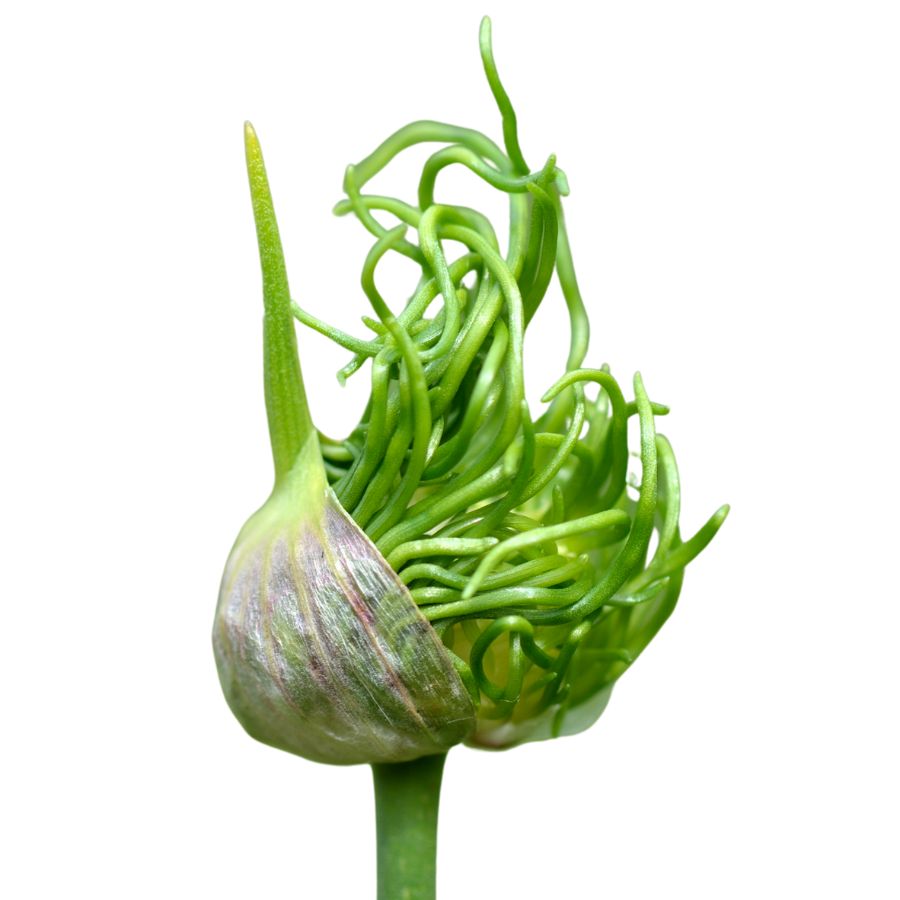
Wild garlic has slender, hollow leaves that look a lot like chives. When you crush the leaves or bulbs between your fingers, they release a strong garlicky smell that makes identification easier.
The are both edible, and You can use the bulbs and leaves raw or cooked in different dishes. Just make sure you are not mistaking it for toxic lookalikes like death camas, which does not smell like garlic at all.
Wild garlic has a sharp, onion-garlic flavor that becomes milder when cooked. You can chop the leaves into salads, stir them into soups, or blend them into sauces like pesto.
One thing to watch for is that the bulbs can sometimes have a tough, fibrous outer layer you will want to peel away before eating. If you want the best flavor, focus on younger, tender leaves rather than older, stringy ones.
Plantain (Plantago major, Plantago lanceolata)

Plantain, also called common plantain or narrowleaf plantain depending on the type, is a low-growing plant with broad or lance-shaped leaves and tall, slender flower spikes. The leaves grow in a rosette close to the ground, and the thick veins running through them are one of the easiest ways to tell it apart from other plants.
You can mainly eat the young leaves and the seeds of the plants. Older leaves can become tough and stringy, so it is best to pick the smaller, tender ones when you want to eat them.
Plantain leaves have a slightly bitter, earthy taste and a chewy texture, especially when eaten raw. Many people like to add them to salads, soups, or stews, or lightly steam them to soften the flavor.
Always make sure you have a true plantain before eating because some similar-looking yard plants are not palatable and can upset your stomach. Look for the strong parallel veins and the tough, fibrous stems to help confirm your find.
American Beautyberry (Callicarpa americana)
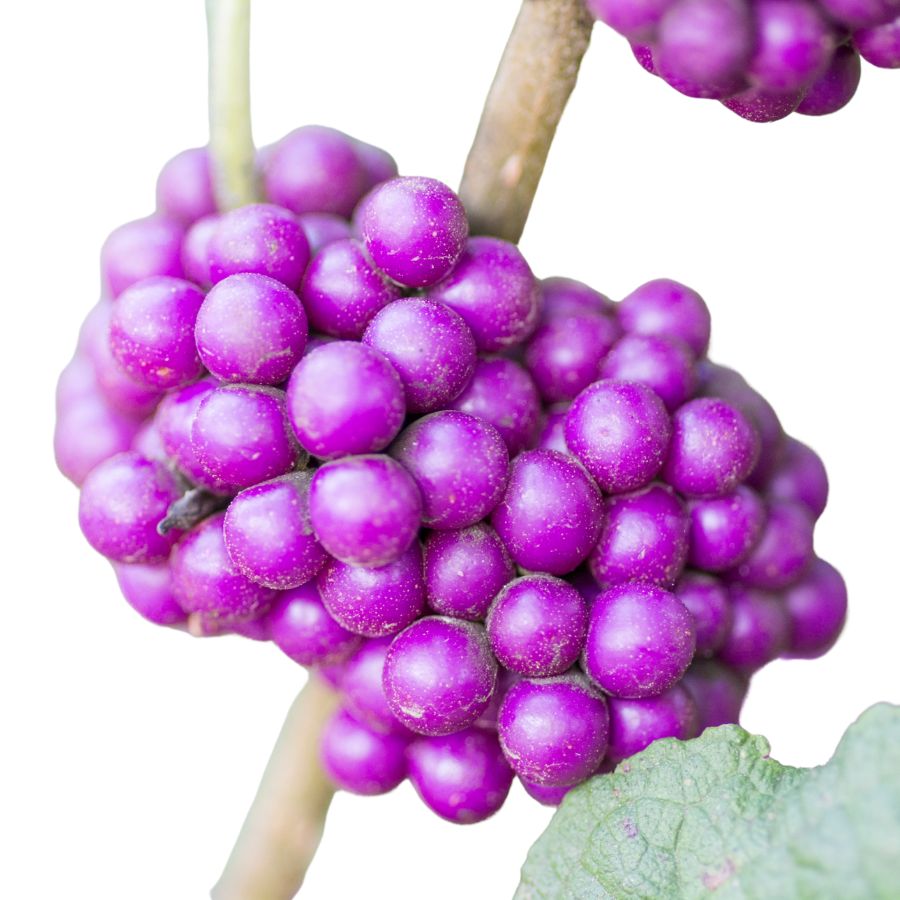
American beautyberry, sometimes called French mulberry or sourbush, is highly easily recognizable thanks to its bright clusters of purple berries wrapped tightly around its stems. The plant itself has arching branches and broad, serrated leaves that give off a slight spicy scent when crushed.
The berries are edible and have a mild, slightly sweet flavor with a soft, juicy texture that some people find a little gritty. Only the ripe purple berries should be eaten, as the leaves and unripe berries are not considered edible.
One of the easiest ways to enjoy beautyberries is by making jelly, where the fruit’s subtle taste really shines through. Some people also simmer the berries into syrups or add them to baked goods, although the flavor can be too delicate to stand out without a little help from sugar or lemon.
Beautyberries are sometimes confused with pokeweed, but pokeweed’s berries are a darker purple and grow on red stems in drooping clusters rather than tight whorls. Always double-check the plant’s structure and berry arrangement so you can be sure you are harvesting true American beautyberry.
Watercress (Nasturtium officinale)
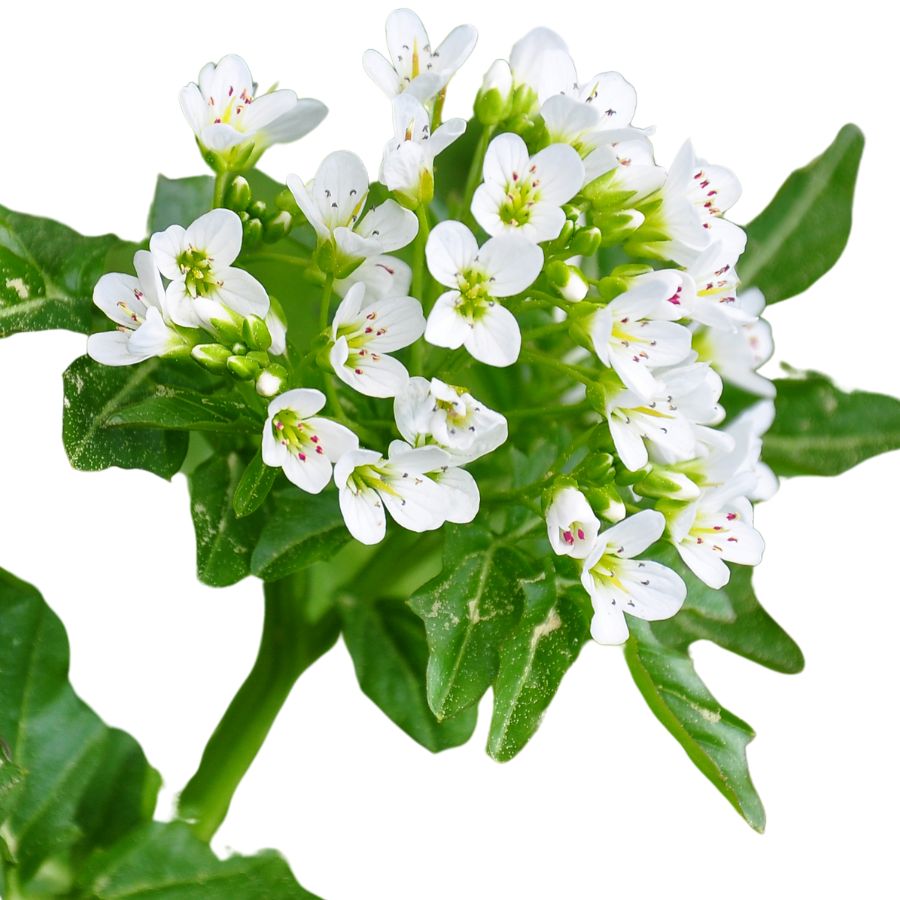
Watercress, also known as yellowcress or garden cress, is an aquatic plant with small, rounded green leaves and hollow stems that often float along the water’s surface. It usually grows in dense mats, and the bright green color is one of the easiest ways to spot it in clear, shallow streams and ponds.
Besides being a popular edible green, watercress has been traditionally used in herbal remedies, especially for boosting digestion and respiratory health.
The leaves and stems are edible, offering a crisp texture and a peppery, slightly spicy taste that can remind you of arugula. People often enjoy it raw in salads, blended into soups, or lightly wilted into stir-fries for a fresh bite.
Stick to eating the leaves and stems, and avoid any parts that look yellowed or slimy, since healthy watercress should always look vibrant and clean.
Watercress has a few lookalikes like lesser celandine or young wild mustard, but true watercress has a distinct sharp flavor and tends to grow only in moving, clean water. Always double-check your identification, because gathering from stagnant or contaminated water sources can expose you to harmful bacteria or parasites.
Dandelion (Taraxacum officinale)
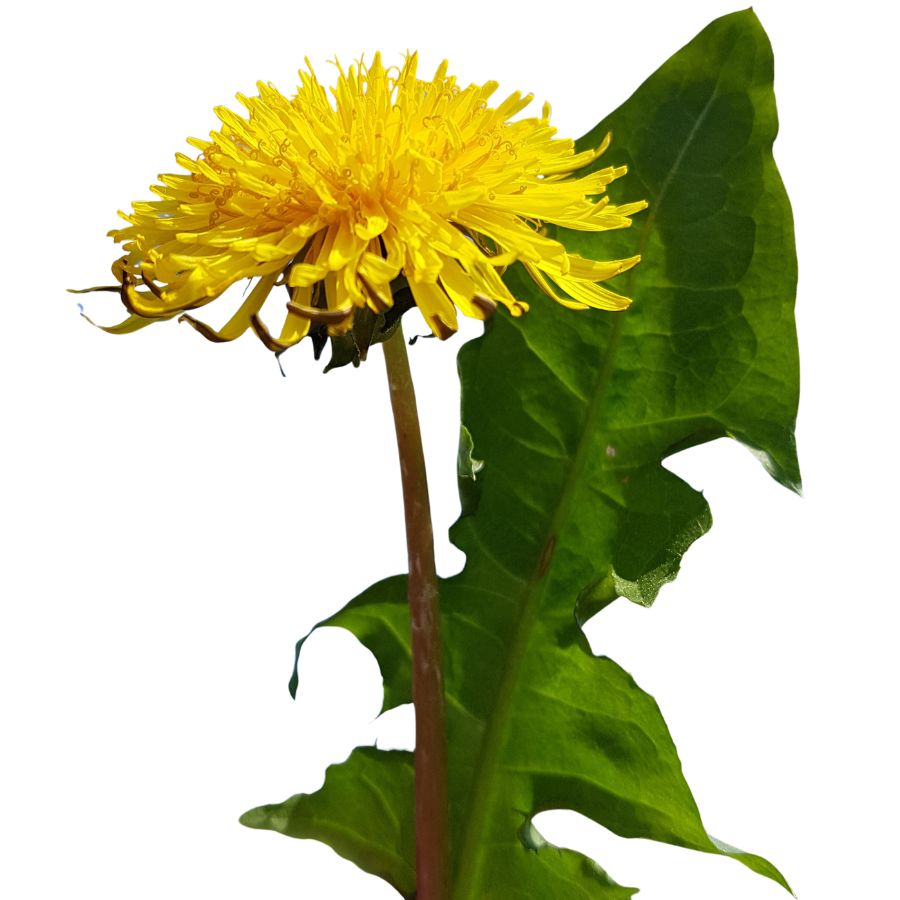
Bright yellow flowers and jagged, deeply toothed leaves make dandelions easy to spot in open fields, lawns, and roadsides. You might also hear them called lion’s tooth, blowball, or puffball once the flowers turn into round, white seed heads.
Every part of the dandelion is edible, but you will want to avoid harvesting from places treated with pesticides or roadside areas with heavy car traffic. Besides being a food source, dandelions have been used traditionally for simple herbal remedies and natural dye projects.
Young dandelion leaves have a slightly bitter, peppery flavor that works well in salads or sautés, and the flowers can be fried into fritters or brewed into tea. Some people even roast the roots to make a coffee substitute with a rich, earthy taste.
One thing to watch out for is cat’s ear, a common lookalike with hairy leaves and branching flower stems instead of a single, hollow one. To make sure you have a true dandelion, check for a smooth, hairless stem that oozes a milky sap when broken.
Prickly Pear Cactus (Opuntia humifusa, Opuntia stricta)
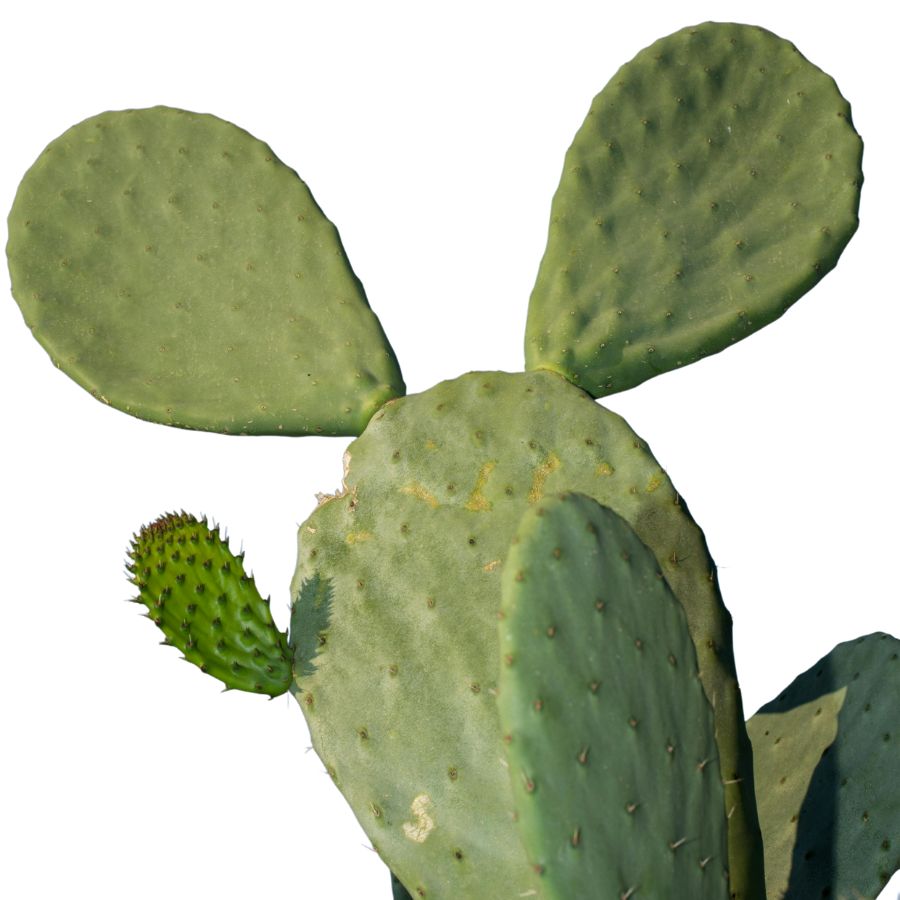
Prickly pear cactus grows in flat, paddle-shaped sections called pads, which are covered in clusters of small spines called glochids. The pads are usually green, but the fruits that follow are round or oval and turn shades of bright red or purple when ripe.
Some plants that look like prickly pear have much denser spines and no edible fruit, so it is important to make sure you have the right one. True prickly pear fruits are filled with tiny hard seeds and have a slightly sticky juice that smells sweet.
The pads, also called nopales, have a firm but tender texture when cooked and taste mildly tart, almost like green beans mixed with lemon. People often grill, sauté, or pickle the pads, while the fruit, called tunas, is eaten raw or made into jellies, candies, and drinks.
Before you eat prickly pear, be sure to remove all the tiny spines from the pads and peel the thick skin off the fruit to avoid irritation. Only the inner flesh of the fruit and the cleaned pads are safe to eat, and skipping those steps can make for a painful mistake.
Purslane (Portulaca oleracea)
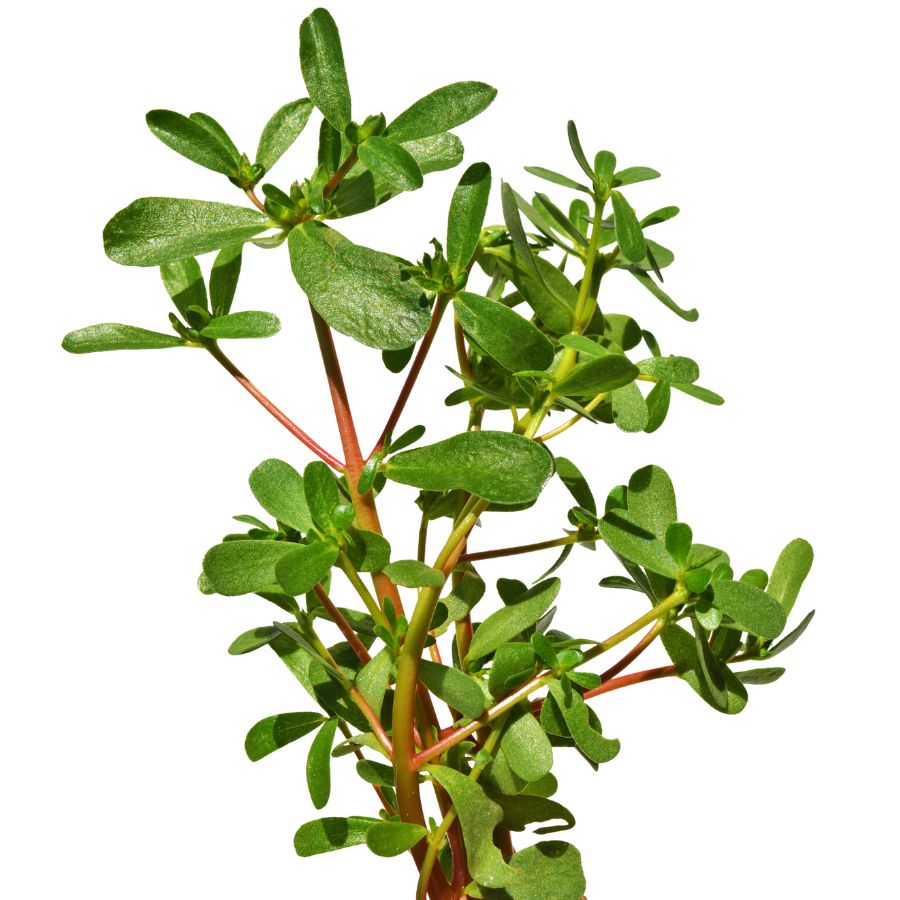
Purslane is a hardy, low-growing plant that’s also sometimes known as little hogweed or verdolaga. It has smooth, reddish stems and thick, paddle-shaped leaves that feel a bit waxy when you touch them.
The stems, leaves, and tiny yellow flowers are all edible, while the roots are not typically eaten. Purslane has a crisp texture with a slightly tart, lemony flavor that works well raw or cooked.
Some plants that look similar include spurge, which has a milky sap and is not edible, so it is important to check for purslane’s smooth, succulent stems and lack of sap. Always double-check by gently snapping a stem to make sure no white liquid appears.
You can toss fresh purslane into salads, sauté it lightly like spinach, or pickle it for later use. Its mild tartness and slight crunch make it a refreshing addition to sandwiches, soups, and even stir-fries.
Spanish Needles (Bidens alba)
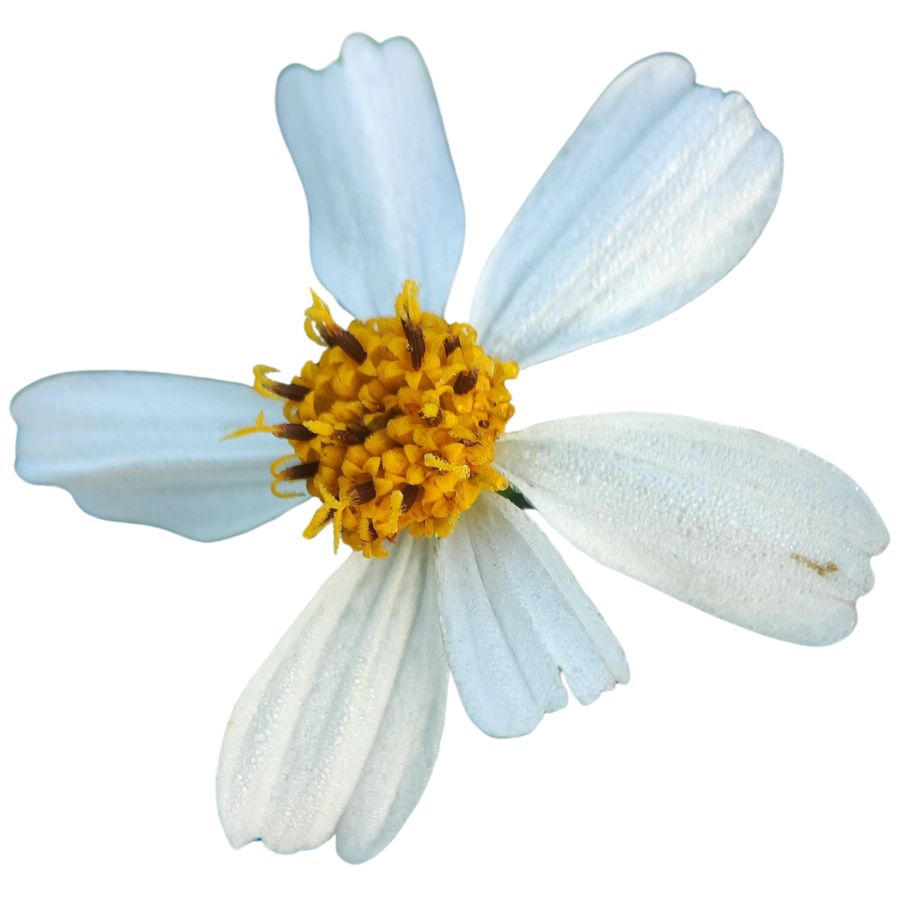
Spanish needles, sometimes called beggarticks or butterfly needles, grow upright with slender stems and small white flowers that have bright yellow centers. The plant gets its name from its long, needle-like seeds that cling to your clothes or skin if you brush past them.
The leaves and young shoots are edible and have a fresh, slightly tangy taste that works well in salads or cooked like spinach. When you chew them, the texture is tender but still has a little bit of bite, especially if the leaves are more mature.
You can cook the leaves by sautéing them lightly, adding them to soups, or blending them into green smoothies for an herbal flavor. The flowers are also edible and sometimes sprinkled fresh over dishes to add a mild, slightly sweet note.
One thing to watch out for is that Spanish needles can be confused with some other daisy-like wildflowers that are not edible. Always make sure the seeds are long and needle-shaped and that the flower petals are spaced out unevenly, which helps set it apart from similar plants.
Wild Mustard (Brassica juncea, Brassica nigra)
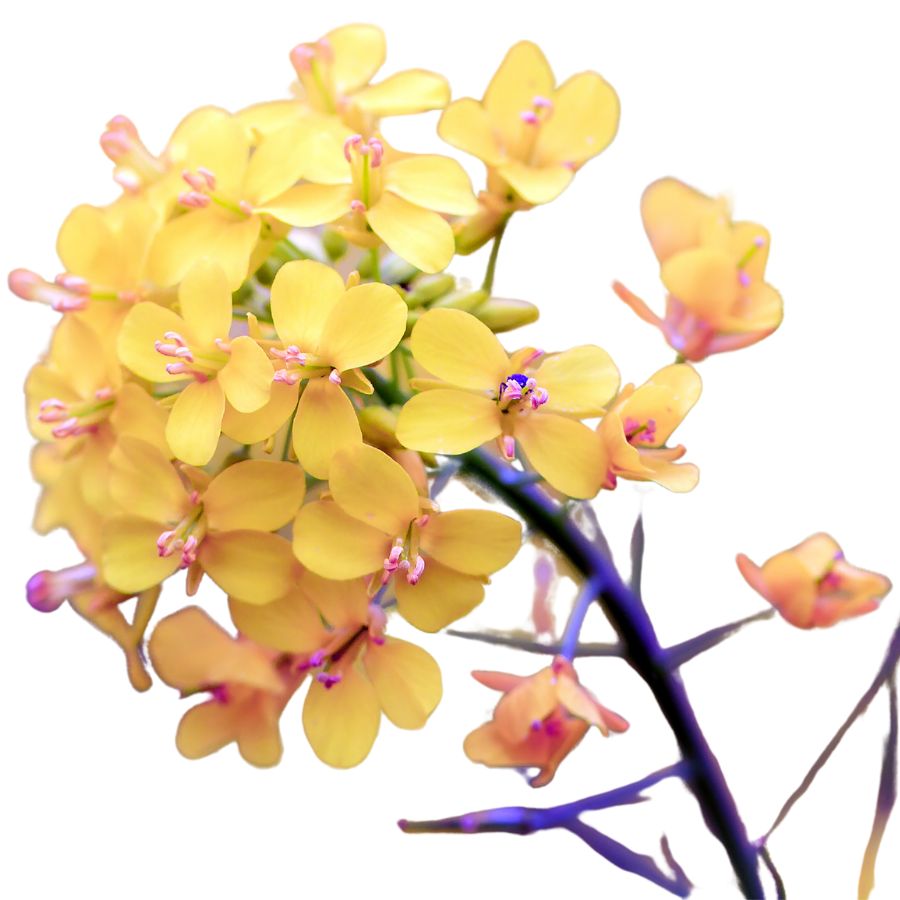
Wild mustard is sometimes called field mustard or black mustard, and it is a surprisingly common wild edible. The plants usually have bright yellow flowers with four petals and slightly fuzzy, lobed leaves that look a little like arugula.
When you are looking for wild mustard, be careful not to confuse it with young poison hemlock, which can have similar leaf shapes but no yellow flowers and a more finely divided, lacy appearance. Wild mustard leaves, stems, flowers, seed pods, and seeds are all edible, but the roots are usually too tough and fibrous to be worth eating.
The flavor of wild mustard can be peppery and sharp when raw, but cooking the leaves or stems softens the taste and brings out a mild, cabbage-like sweetness. People often sauté the greens, pickle the buds, or grind the seeds to make a spicy homemade mustard.
One interesting thing about wild mustard is that it is part of a huge family of plants humans have cultivated for centuries, including broccoli, kale, and turnips. If you harvest wild mustard, make sure you positively identify it, because while it is safe to eat, some toxic plants can look similar when they are young.
Lamb’s Quarters (Chenopodium album)
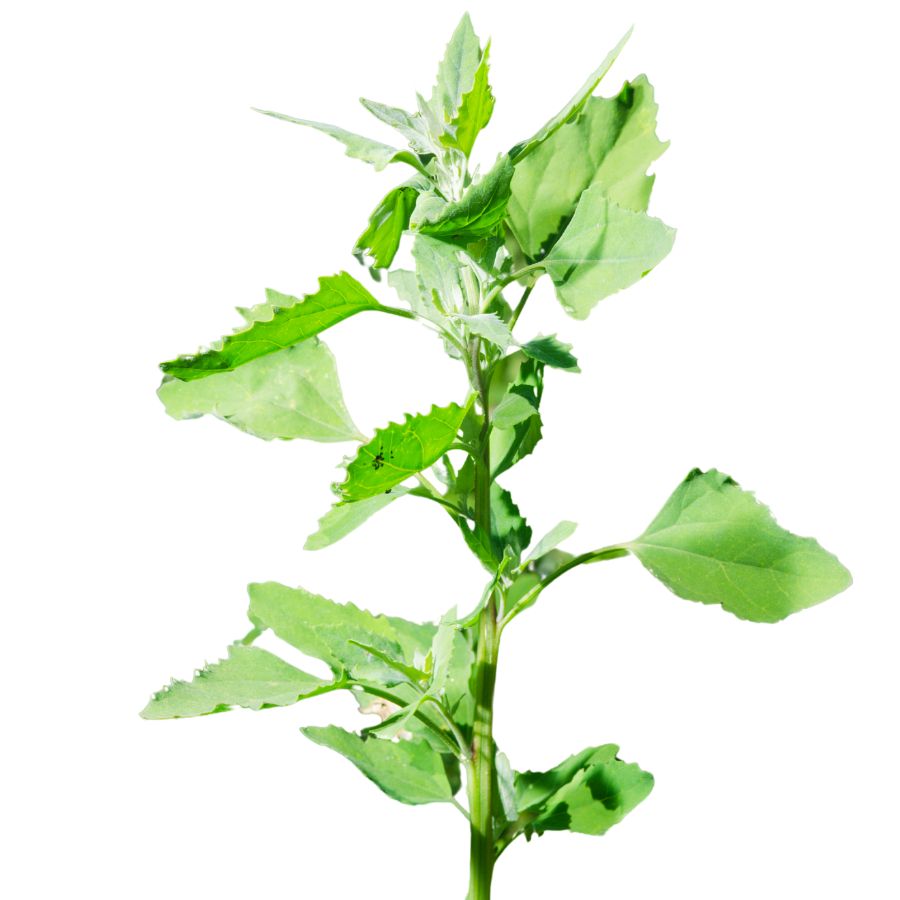
Lamb’s quarters, also called wild spinach and pigweed, has soft green leaves that often look dusted with a white, powdery coating. The leaves are shaped a little like goose feet, with slightly jagged edges and a smooth underside that feels almost velvety when you touch it.
A few plants can be confused with lamb’s quarters, like some types of nightshade, but true lamb’s quarters never have berries and its leaves are usually coated in that distinctive white bloom. Always check that the stems are grooved and not round and smooth like the poisonous lookalikes.
When you taste lamb’s quarters, you will notice it has a mild, slightly nutty flavor that gets richer when cooked. The young leaves, tender stems, and even the seeds are all edible, but you should avoid eating the older stems because they become tough and stringy.
People often sauté lamb’s quarters like spinach, blend it into smoothies, or dry the leaves for later use in soups and stews. It is also rich in oxalates, so you will want to cook it before eating large amounts to avoid any problems.
Peppergrass (Lepidium virginicum)
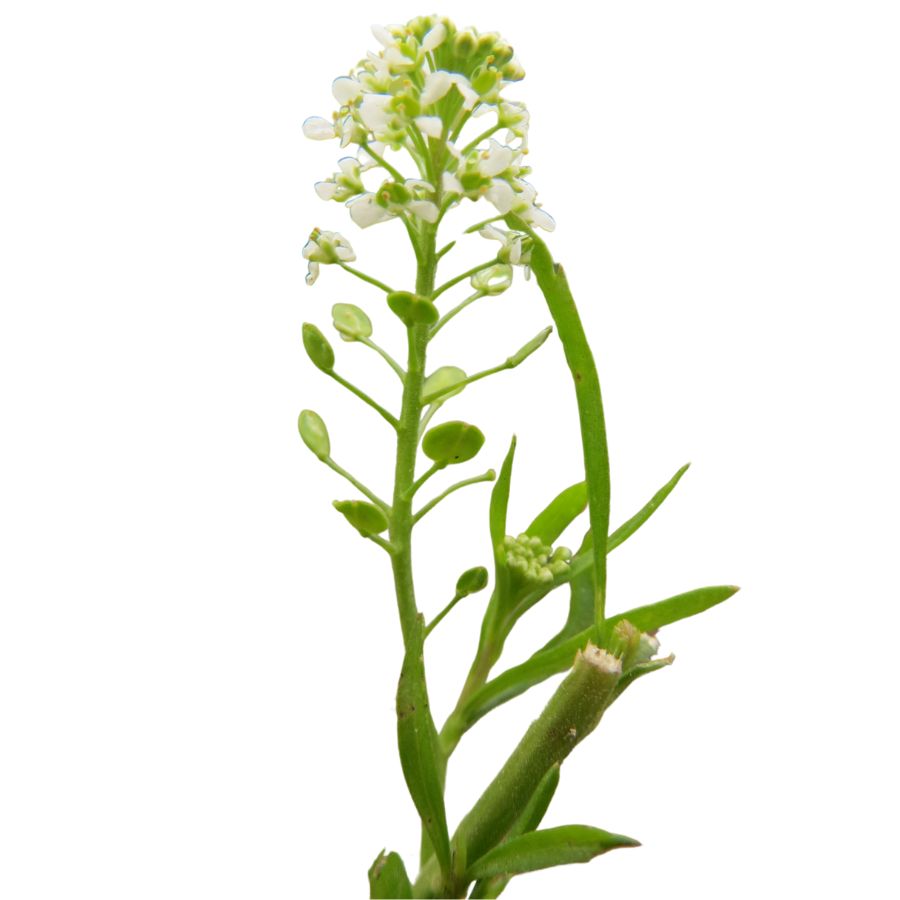
Peppergrass, sometimes called Virginia pepperweed or poor man’s pepper, is a small leafy plant that grows upright with tiny white flowers. The plant’s seed pods are flat, round, and shaped like tiny coins, making them easy to spot once you know what to look for.
You can eat the leaves, young seed pods, and even the flowers of peppergrass. The seed pods are the part most people like to harvest because they have a strong, peppery bite that livens up salads or sandwiches.
Some wild mustards can look a little bit like peppergrass, but their seed pods are usually longer and shaped more like skinny beans. When you are checking the plant, look closely at the flat, disk-shaped pods to make sure you have the right one.
Peppergrass has a spicy flavor that gets sharper as the plant matures, almost like a cross between black pepper and a mild radish. People often use the fresh pods or leaves chopped into salads, or sometimes grind the dried seeds as a seasoning.
Chickweed (Stellaria media)
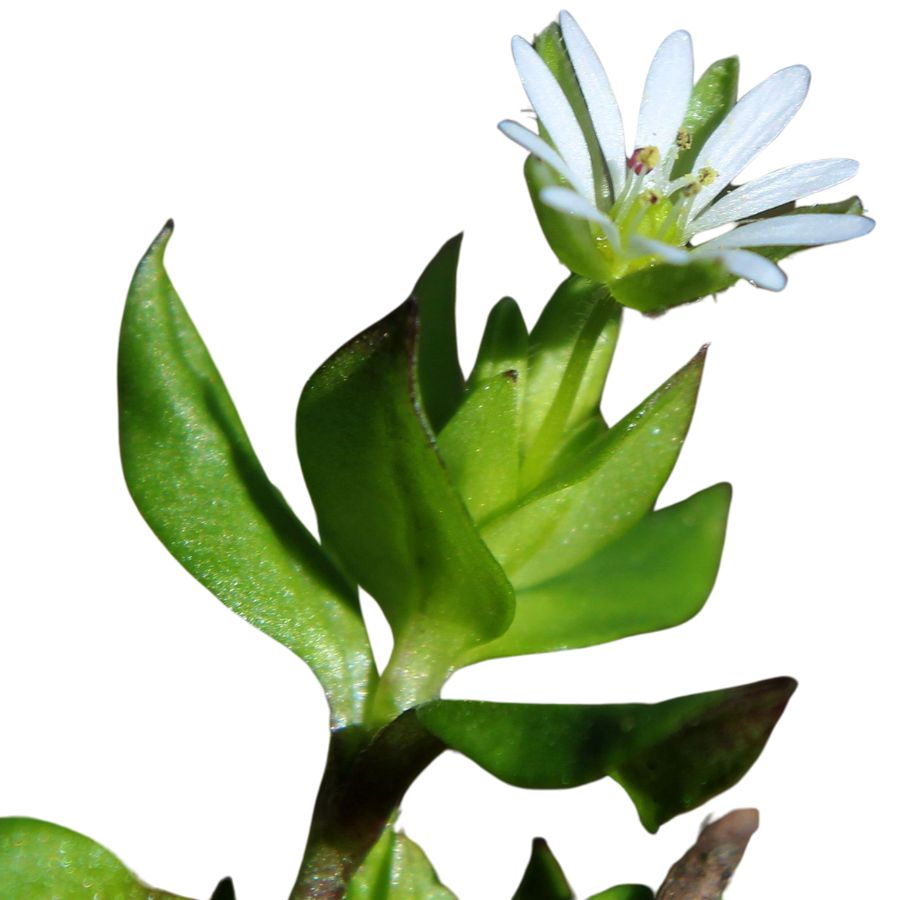
Chickweed, sometimes called satin flower or starweed, is a small, low-growing plant with delicate white star-shaped flowers and bright green leaves. The leaves are oval, pointed at the tip, and often grow in pairs along a slender, somewhat weak-looking stem.
When gathering chickweed, watch out for lookalikes like scarlet pimpernel, which has similar leaves but orange flowers instead of white. A key detail to check is the fine line of hairs that runs along one side of chickweed’s stem, a feature the dangerous lookalikes do not have.
The young leaves, tender stems, and flowers of chickweed are all edible, offering a mild, slightly grassy flavor with a crisp texture. You can toss it fresh into salads, blend it into pestos, or lightly wilt it into soups and stir-fries for a fresh green boost.
Aside from being a food plant, chickweed has been used traditionally in poultices and salves to help soothe skin irritations. Always make sure the plant is positively identified before eating, since mistaking it for a toxic lookalike could cause serious issues.
Blackberry (Rubus spp.)
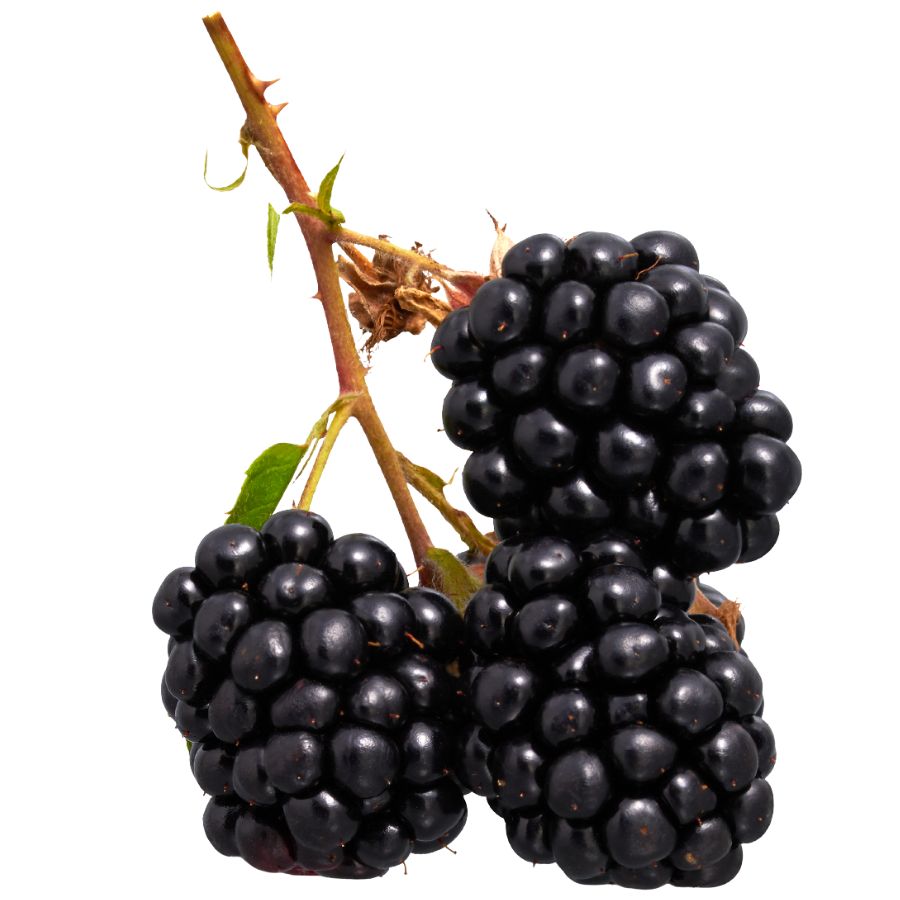
Blackberry, also known as brambleberry or dewberry, grows on thick, thorny canes that can arch and spread across the ground. The leaves are usually serrated, and the fruit ripens from green to red before turning deep purple or black when fully ready to pick.
The berries have a sweet, tangy flavor with a soft, juicy texture that easily bursts in your mouth. You can eat them raw, bake them into pies and cobblers, or preserve them by making jams and jellies.
Only the ripe fruit of the blackberry plant is edible, while the stems and leaves are not usually eaten.
Some plants like black raspberry can look similar, but black raspberries are hollow in the center when picked while blackberries have a solid core. It’s important to avoid confusing blackberries with nightshade berries, which grow on upright plants without thorny vines and can be toxic.
An interesting thing about blackberries is that they are technically not a single berry but a cluster of small drupelets packed together.
Wood Sorrel (Oxalis spp.)
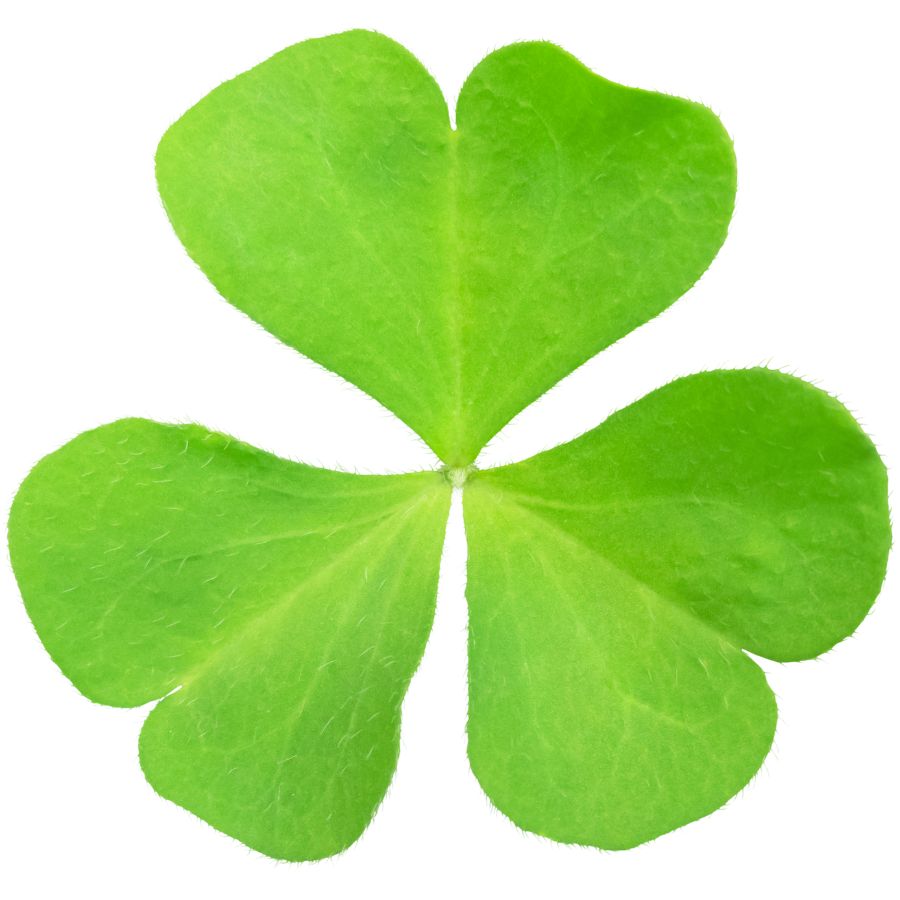
Wood sorrel is easy to spot with its clover-like leaves, delicate flowers, and sour flavor. It often goes by names like sourgrass and shamrock, although it is not the same as the traditional Irish shamrock.
Wood sorrel can be mistaken for true clovers, which do not have the same sour taste. Always check the leaf shape and flavor before eating, because wood sorrel leaves are distinctly heart-shaped and more delicate.
The leaves, flowers, and seed pods of wood sorrel are all edible and have a sharp, lemony taste that makes them a refreshing trail snack. You can also toss them into salads or use them as a garnish to brighten up a dish with their tartness.
While wood sorrel is generally safe in small amounts, it does contain oxalic acid, so it is best not to eat large quantities. Some people also like to brew the leaves into a light, tangy tea, adding another way to enjoy this common and flavorful wild plant.
Cattail (Typha latifolia, Typha domingensis)
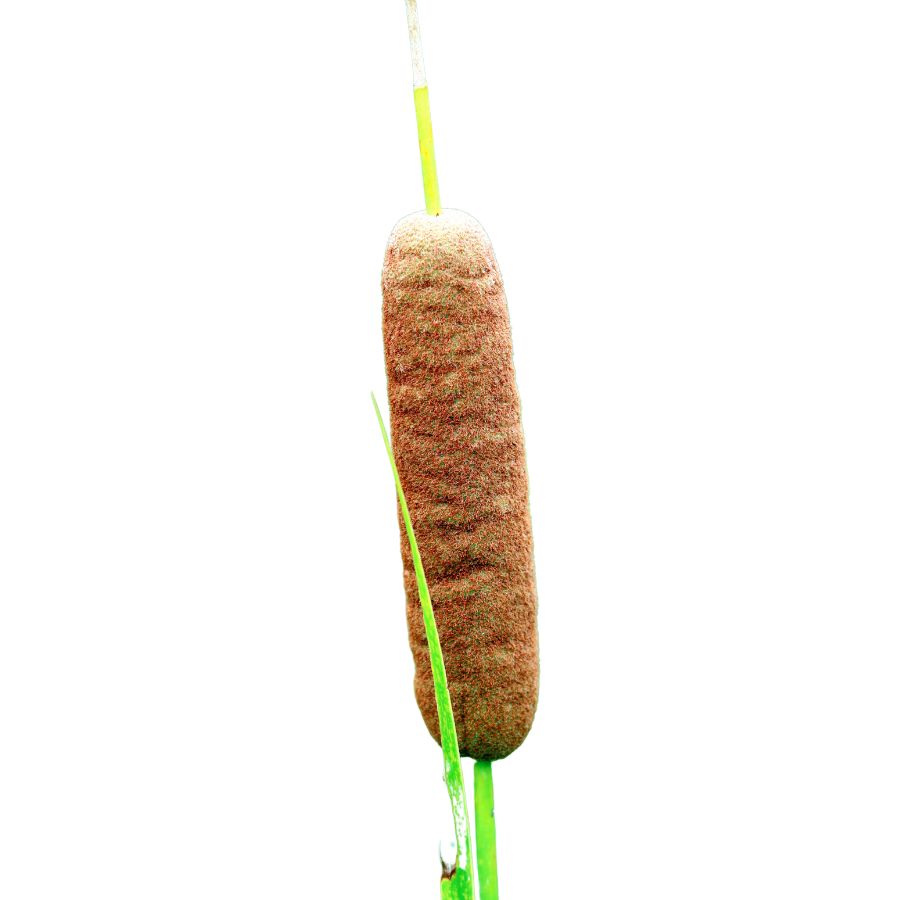
Cattails, often called bulrushes or corn dog grass, are easy to spot with their tall green stalks and brown, sausage-shaped flower heads. They grow thickly along the edges of ponds, lakes, and marshes, forming dense stands that are hard to miss.
Almost every part of the cattail is edible, including the young shoots, flower heads, and starchy rhizomes. You can eat the tender shoots raw, boil the flower heads like corn on the cob, or grind the rhizomes into flour for baking.
Besides food, cattails have long been used for making mats, baskets, and even insulation by weaving the dried leaves and using the fluffy seeds. Their combination of usefulness and abundance has made them an important survival plant for many cultures.
One thing you need to watch for is young cattail shoots being confused with similar-looking plants like iris, which are toxic. A real cattail shoot will have a mild cucumber-like smell when you snap it open, while iris plants smell bitter or unpleasant.
Elderberry (Sambucus nigra subsp. canadensis)
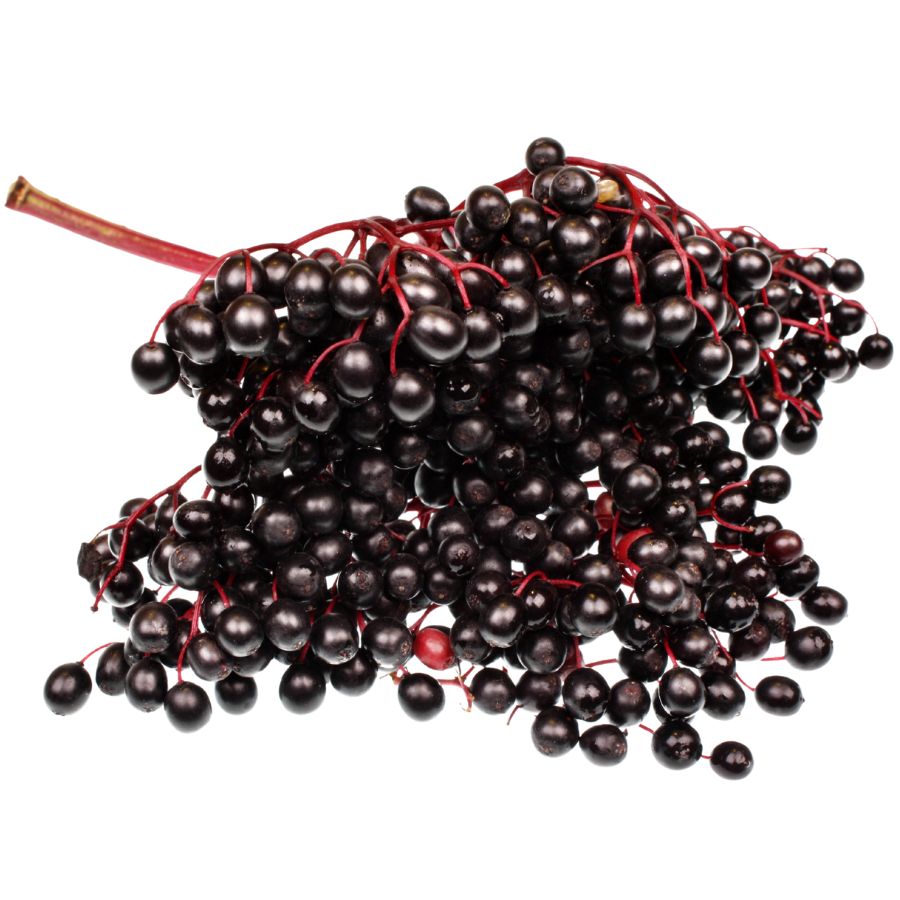
Elderberry is often called American elder, common elder, or sweet elder. It grows as a large, shrubby plant with clusters of tiny white flowers that eventually turn into deep purple to black berries.
You can recognize elderberry by its compound leaves with five to eleven serrated leaflets and its flat-topped flower clusters. One important thing to watch out for is its toxic lookalikes, like pokeweed, which has very different smooth-edged leaves and reddish stems.
The ripe berries have a tart, almost earthy flavor and a soft texture when cooked. People usually cook elderberries into syrups, jams, pies, or wine because eating raw berries can cause nausea.
Only the ripe, cooked berries and flowers are edible, while the leaves, stems, and unripe berries are toxic. Always take care to strip the berries cleanly from their stems before using them, as even small bits of stem can cause problems.
Mulberry (Morus rubra, Morus alba)
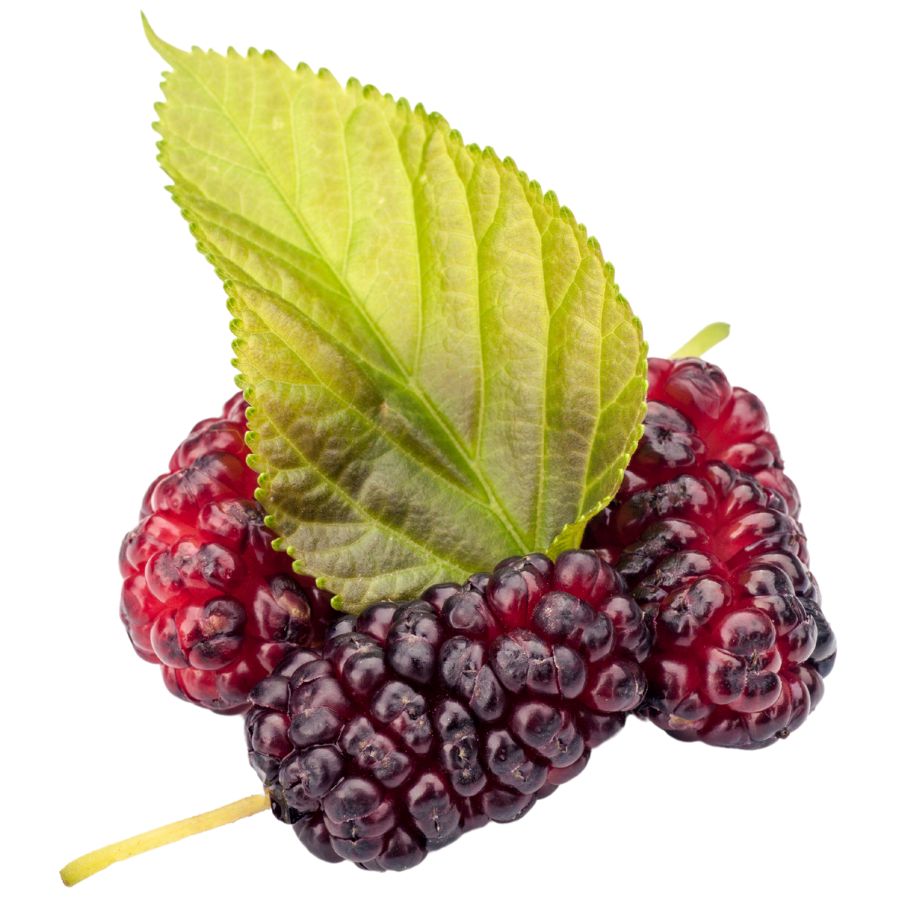
Sweet, juicy, and often overlooked, mulberries are one of the easiest wild berries to recognize. Known by names like white mulberry and red mulberry, these trees produce small, blackberry-like fruits that range from pale pink to deep purple.
The berries have a soft, almost melting texture with a mild tartness behind the sugar. You can eat them fresh by the handful, bake them into pies, or simmer them down into homemade jams and syrups.
While the fruits are safe and delicious when ripe, you should avoid eating the unripe berries or any part of the tree’s sap, which can cause stomach upset. It is also worth knowing that mulberries are delicate and bruise easily when picked, so handle them gently.
Red osier dogwood and some honeysuckles can produce berries that look similar from a distance, but true mulberries grow singly or in loose clusters along the branches and have a distinctive leaf shape that sets them apart. Always double-check the leaf texture and berry arrangement before eating any wild fruits.
Persimmon (Diospyros virginiana)
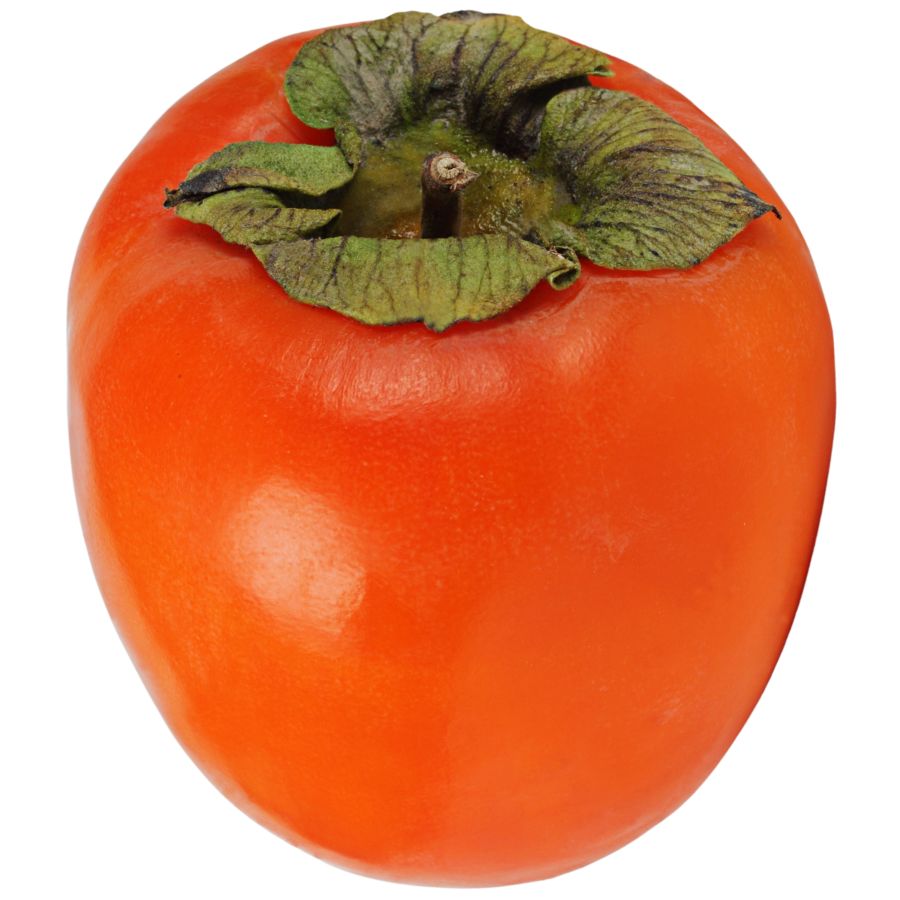
Persimmon, sometimes called American persimmon or common persimmon, grows as a small tree with rough, blocky bark and oval-shaped leaves. The fruit looks like a small, flattened tomato and turns a deep orange or reddish color when ripe.
If you bite into an unripe persimmon, you will quickly notice an extremely astringent, mouth-drying effect. A ripe persimmon, on the other hand, tastes sweet, rich, and custard-like, with a soft and jelly-like texture inside.
You can eat persimmons fresh once they are fully ripe, or you can cook them down into puddings, jams, and baked goods. Some people also mash and freeze the pulp to use later for pies, breads, and sauces.
Wild persimmons can sometimes be confused with black nightshade berries, but nightshade fruits are much smaller, grow in clusters, and stay dark purple or black. Only the ripe fruit of the persimmon tree should be eaten; the seeds and the unripe fruit are not edible.
Wild Lettuce (Lactuca canadensis)

Tall, leafy stalks with jagged edges and a milky sap mark the plant known as wild lettuce. You will usually notice the pale green stems and purple-tinged veins that make it stand out from other wild greens.
The taste of wild lettuce is noticeably bitter, especially once the plant matures. If you want a milder flavor, you can cook the young leaves by boiling or sautéing them to reduce some of the bitterness.
Only the young leaves and tender parts of wild lettuce can be eaten, and you should avoid the mature stems and roots. Older plants tend to become too tough and unpleasant to eat, even when cooked.
Some plants, like common dandelions and prickly lettuce, can look a little similar to wild lettuce at first glance. If you crush the stem and see a thick white sap and no pronounced dandelion-like flower, you are most likely looking at wild lettuce.
Yucca (Yucca filamentosa)
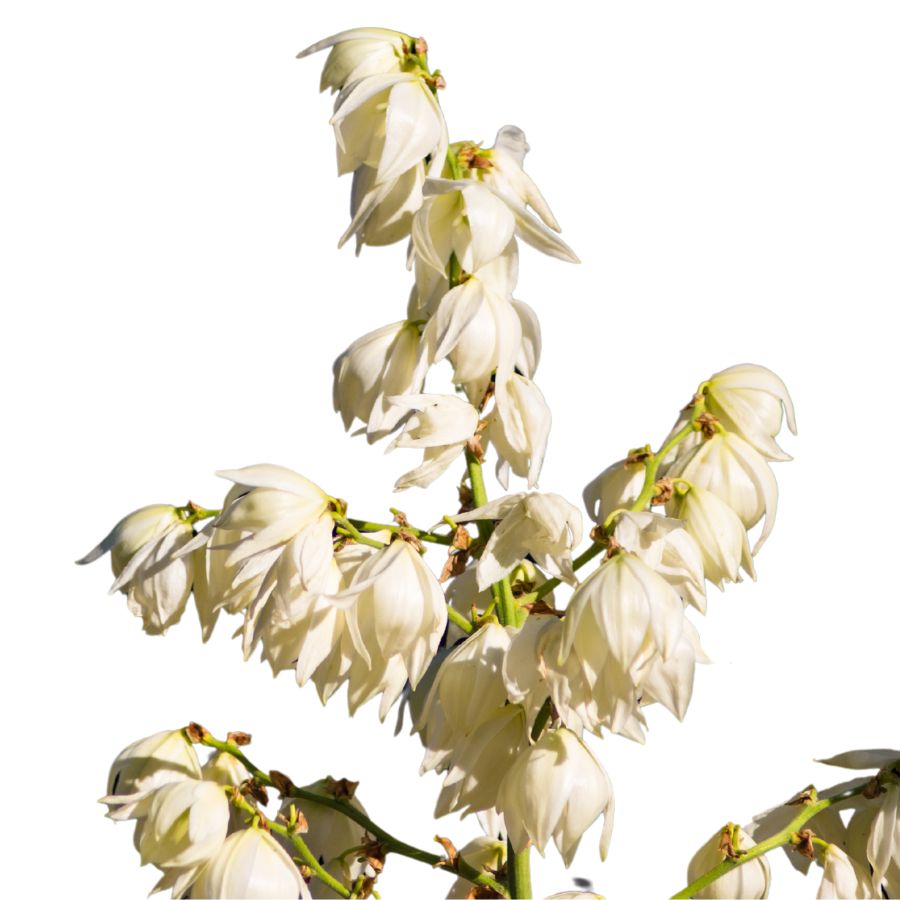
Yucca, often called Adam’s needle, is a tough-looking plant with long, sword-shaped leaves that have curly threads peeling off the edges. When it blooms, it sends up a tall stalk filled with clusters of creamy white, bell-shaped flowers that really stand out against the sharp greenery.
Some parts of yucca are edible, especially the flowers and the tender shoots, but the leaves and roots are not meant to be eaten. The flowers have a slightly bitter flavor with a crisp texture, and you can toss them into salads, sauté them lightly, or even batter and fry them for a simple snack.
It is important to make sure you are actually picking yucca and not confusing it with plants like agave, which can be toxic if eaten raw. One easy way to tell them apart is that yucca flowers hang down in big drooping bunches, while agave flowers tend to grow upright on tall, branching stalks.
If you are cooking with yucca flowers, rinse them thoroughly to remove any lingering bitterness and insects hidden inside the petals. The flavor is mild enough that it works well in savory dishes, and it adds a nice bit of crunch without overpowering other ingredients.
Toxic Plants That Look Like Edible Plants
There are plenty of wild edibles to choose from, but some toxic native plants closely resemble them. Mistaking the wrong one can lead to severe illness or even death, so it’s important to know exactly what you’re picking.
Poison Hemlock (Conium maculatum)
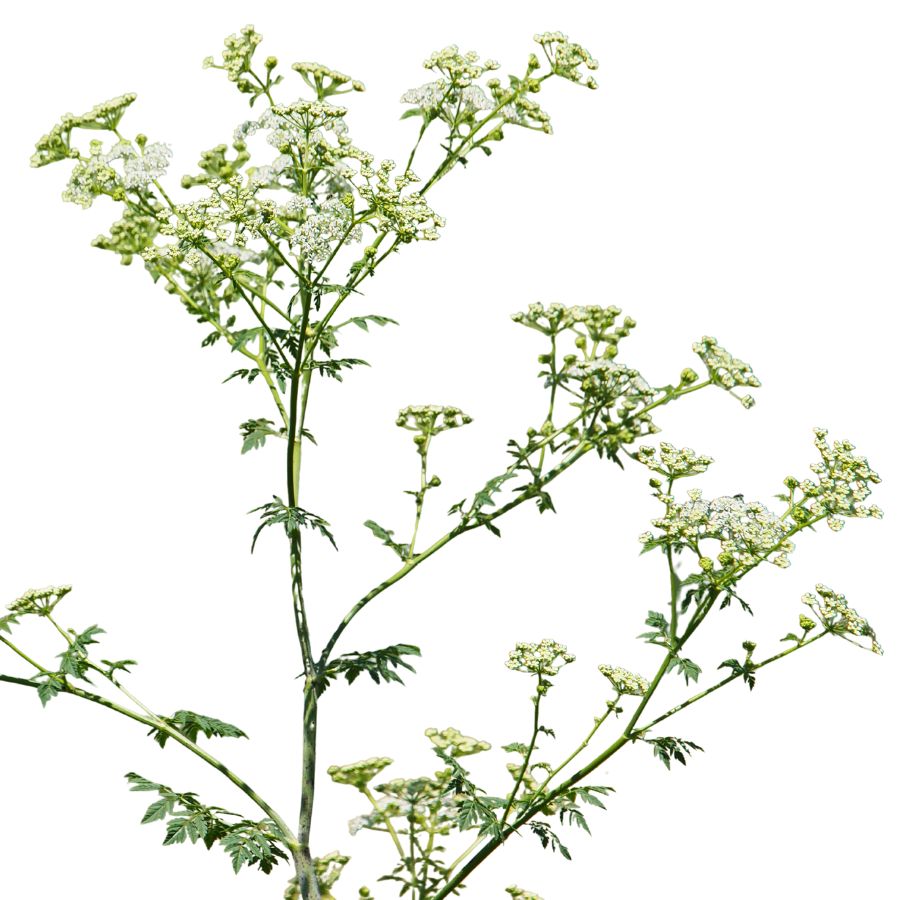
Often mistaken for: Wild carrot (Daucus carota)
Poison hemlock is a tall plant with lacy leaves and umbrella-like clusters of tiny white flowers. It has smooth, hollow stems with purple blotches and grows in sunny places like roadsides, meadows, and stream banks.
Unlike wild carrot, which has hairy stems and a dark central floret, poison hemlock has a musty odor and no flower center spot. It’s extremely toxic; just a small amount can be fatal, and even touching the sap can irritate the skin.
Water Hemlock (Cicuta spp.)
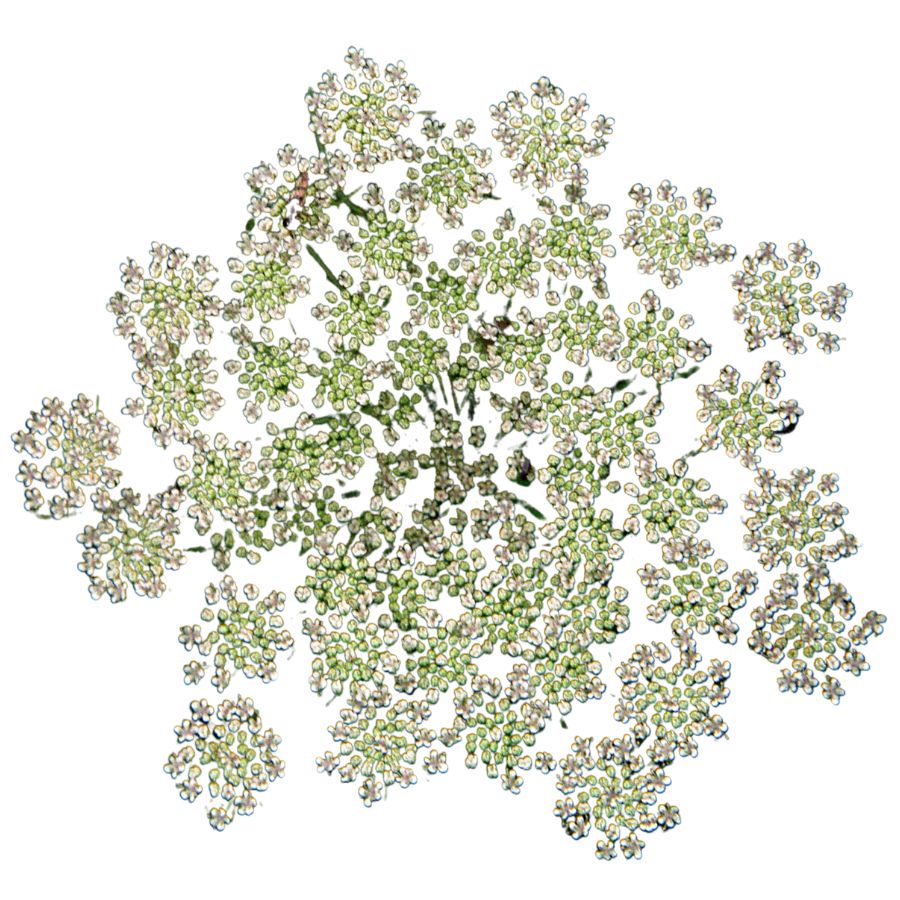
Often mistaken for: Wild parsnip (Pastinaca sativa) or wild celery (Apium spp.)
Water hemlock is a tall, branching plant with umbrella-shaped clusters of small white flowers. It grows in wet places like stream banks, marshes, and ditches, with stems that often show purple streaks or spots.
It can be confused with wild parsnip or wild celery, but its thick, hollow roots have internal chambers and release a yellow, foul-smelling sap when cut. Water hemlock is the most toxic plant in North America, and just a small amount can cause seizures, respiratory failure, and death.
False Hellebore (Veratrum viride)
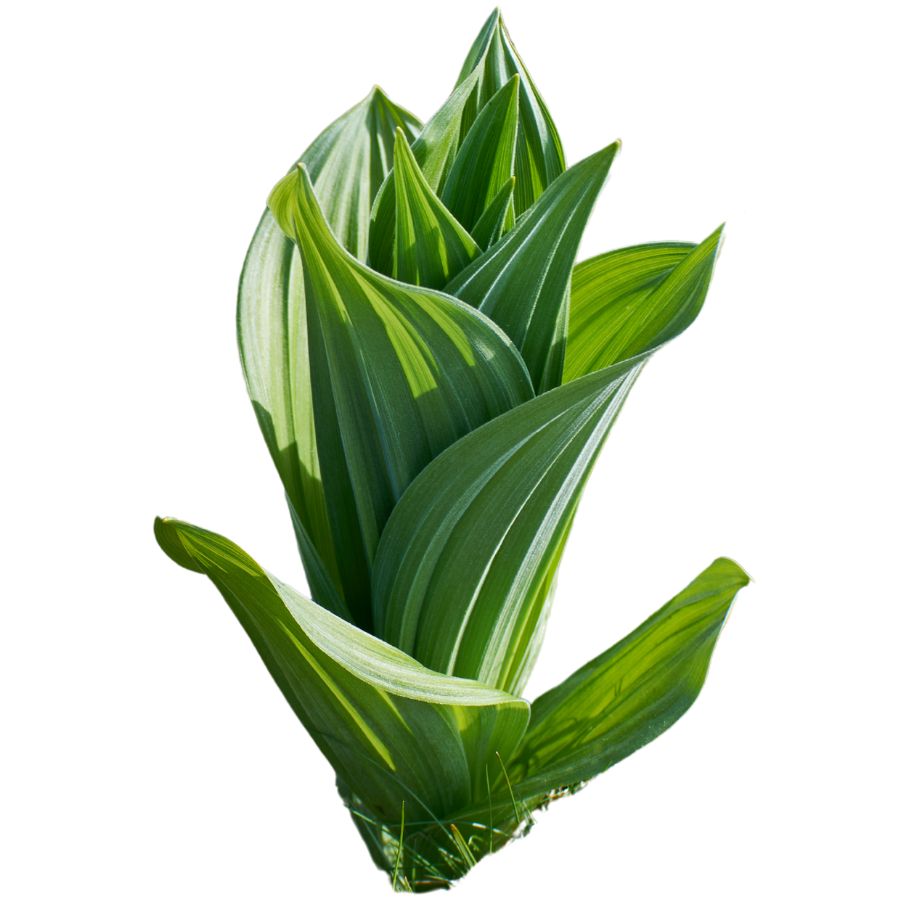
Often mistaken for: Ramps (Allium tricoccum)
False hellebore is a tall plant with broad, pleated green leaves that grow in a spiral from the base, often appearing early in spring. It grows in moist woods, meadows, and along streams.
It’s commonly mistaken for ramps, but ramps have a strong onion or garlic smell, while false hellebore is odorless and later grows a tall flower stalk. The plant is highly toxic, and eating any part can cause nausea, a slowed heart rate, and even death due to its alkaloids that affect the nervous and cardiovascular systems.
Death Camas (Zigadenus spp.)
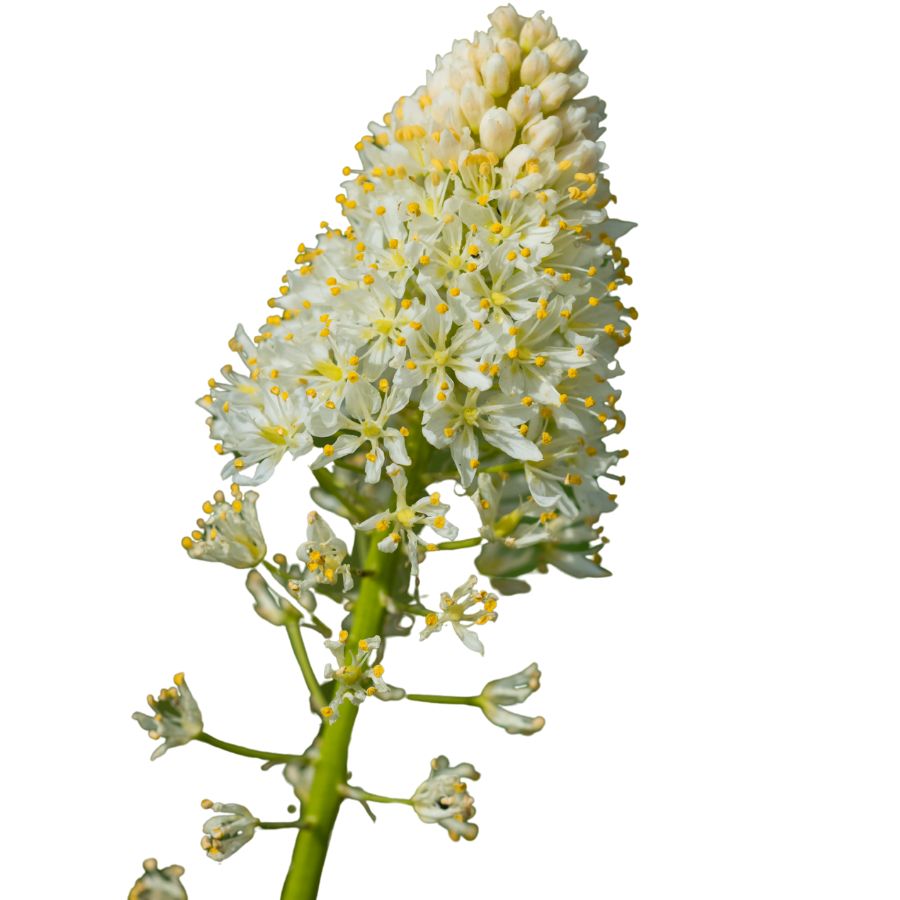
Often mistaken for: Wild onion or wild garlic (Allium spp.)
Death camas is a slender, grass-like plant that grows from underground bulbs and is found in open woods, meadows, and grassy hillsides. It has small, cream-colored flowers in loose clusters atop a tall stalk.
It’s often confused with wild onion or wild garlic due to their similar narrow leaves and habitats, but only Allium plants have a strong onion or garlic scent, while death camas has none. The plant is extremely poisonous, especially the bulbs, and even a small amount can cause nausea, vomiting, a slowed heartbeat, and potentially fatal respiratory failure.
Buckthorn Berries (Rhamnus spp.)
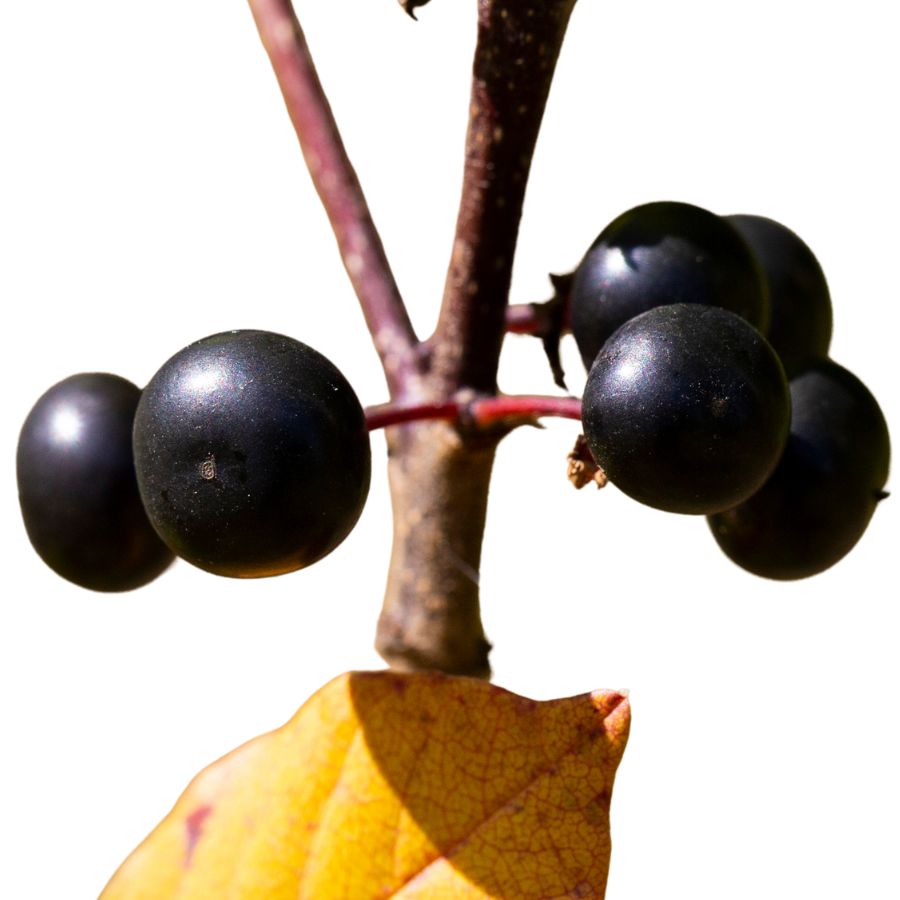
Often mistaken for: Elderberries (Sambucus spp.)
Buckthorn is a shrub or small tree often found along woodland edges, roadsides, and disturbed areas. It produces small, round berries that ripen to dark purple or black and usually grow in loose clusters.
These berries are sometimes mistaken for elderberries and other wild fruits, which also grow in dark clusters, but elderberries form flat-topped clusters on reddish stems while buckthorn berries are more scattered. Buckthorn berries are unsafe to eat as they contain compounds that can cause cramping, vomiting, and diarrhea, and large amounts may lead to dehydration and serious digestive problems.
Mayapple (Podophyllum peltatum)
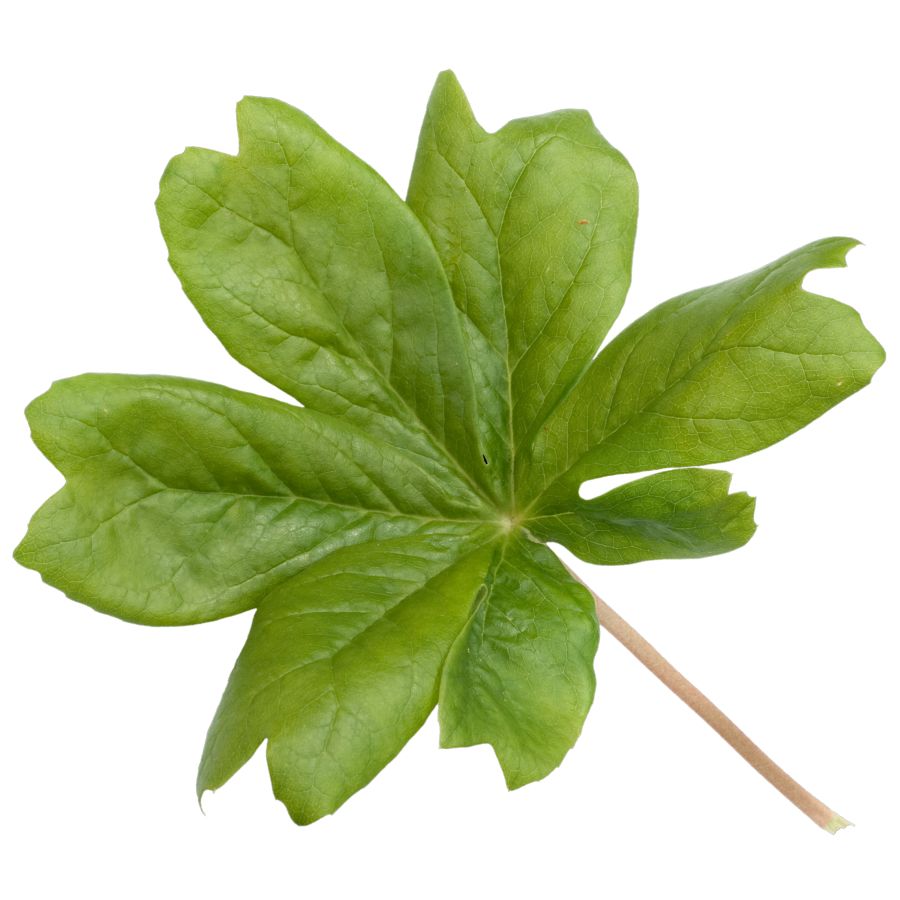
Often mistaken for: Wild grapes (Vitis spp.)
Mayapple is a low-growing plant found in shady forests and woodland clearings. It has large, umbrella-like leaves and produces a single pale fruit hidden beneath the foliage.
The unripe fruit resembles a small green grape, causing confusion with wild grapes, which grow in woody clusters on vines. All parts of the mayapple are toxic except the fully ripe, yellow fruit, which is only safe in small amounts. Eating unripe fruit or other parts can lead to nausea, vomiting, and severe dehydration.
Virginia Creeper (Parthenocissus quinquefolia)
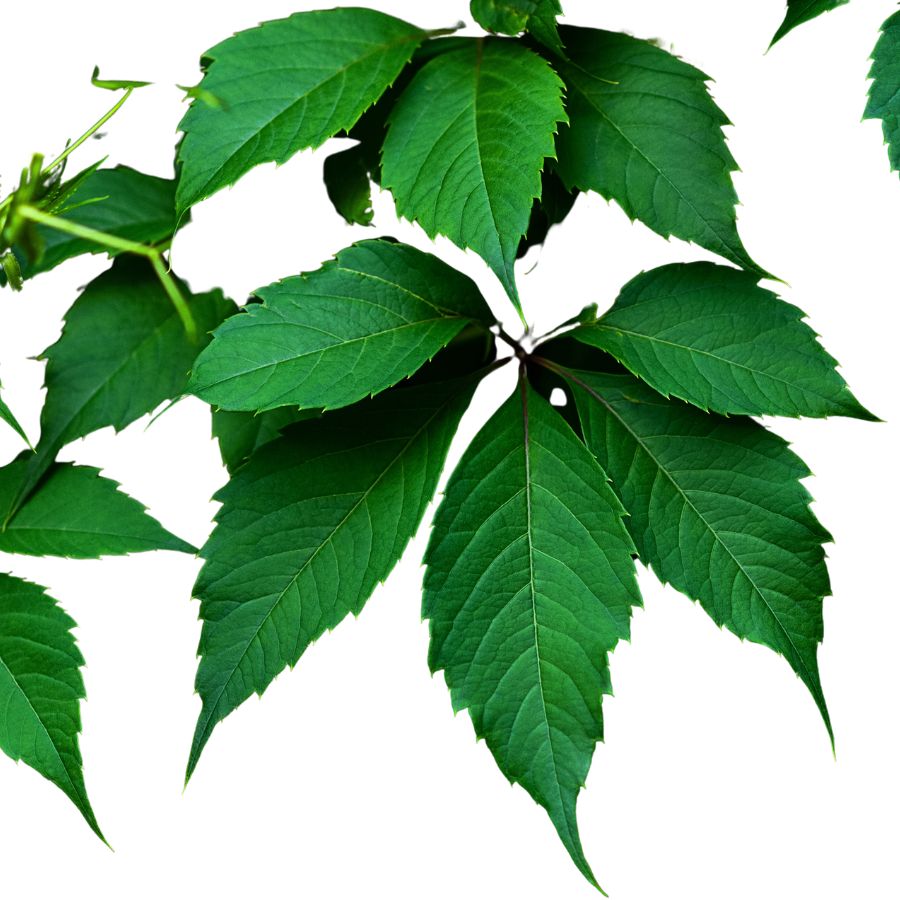
Often mistaken for: Wild grapes (Vitis spp.)
Virginia creeper is a fast-growing vine found on fences, trees, and forest edges. It has five leaflets per stem and produces small, bluish-purple berries from late summer to fall.
It’s often confused with wild grapes since both are climbing vines with similar berries, but grapevines have large, lobed single leaves and tighter fruit clusters. Virginia creeper’s berries are toxic to humans and contain oxalate crystals that can cause nausea, vomiting, and throat irritation.
Castor Bean (Ricinus communis)
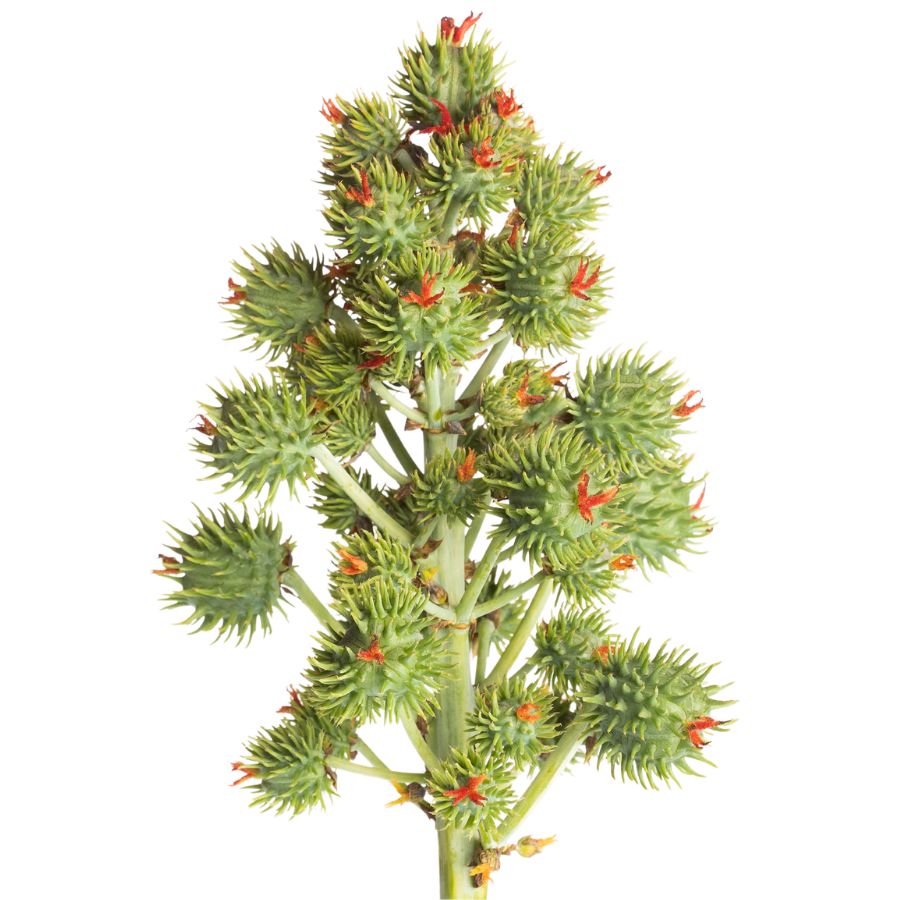
Often mistaken for: Wild rhubarb (Rumex spp. or Rheum spp.)
Castor bean is a bold plant with large, lobed leaves and tall red or green stalks, often found in gardens, along roadsides, and in disturbed areas in warmer regions in the US. Its red-tinged stems and overall size can resemble wild rhubarb to the untrained eye.
Unlike rhubarb, castor bean plants produce spiny seed pods containing glossy, mottled seeds that are extremely toxic. These seeds contain ricin, a deadly compound even in small amounts. While all parts of the plant are toxic, the seeds are especially dangerous and should never be handled or ingested.
Before you head out
Before embarking on any foraging activities, it is essential to understand and follow local laws and guidelines. Always confirm that you have permission to access any land and obtain permission from landowners if you are foraging on private property. Trespassing or foraging without permission is illegal and disrespectful.
For public lands, familiarize yourself with the foraging regulations, as some areas may restrict or prohibit the collection of mushrooms or other wild foods. These regulations and laws are frequently changing so always verify them before heading out to hunt. What we have listed below may be out of date and inaccurate as a result.
How to Get the Best Results Foraging
Safety should always come first when it comes to foraging. Whether you’re in a rural forest or a suburban greenbelt, knowing how to harvest wild foods properly is a key part of staying safe and respectful in the field.
Always Confirm Plant ID Before You Harvest Anything
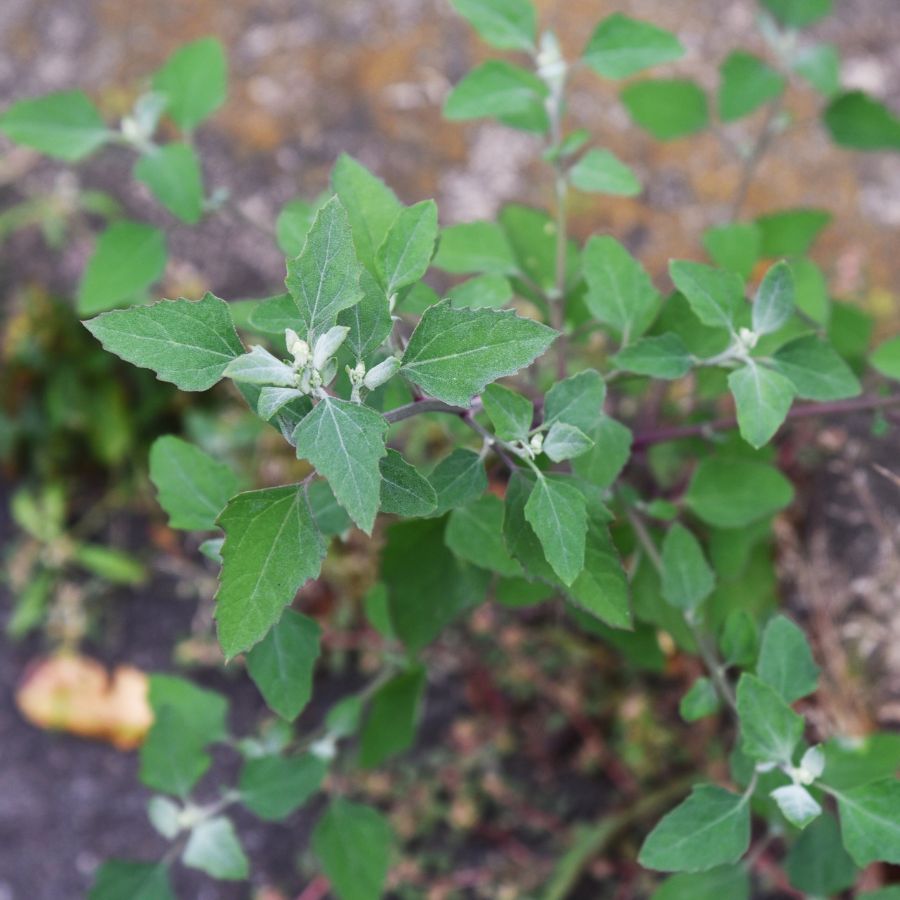
Knowing exactly what you’re picking is the most important part of safe foraging. Some edible plants have nearly identical toxic lookalikes, and a wrong guess can make you seriously sick.
Use more than one reliable source to confirm your ID, like field guides, apps, and trusted websites. Pay close attention to small details. Things like leaf shape, stem texture, and how the flowers or fruits are arranged all matter.
Not All Edible Plants Are Safe to Eat Whole
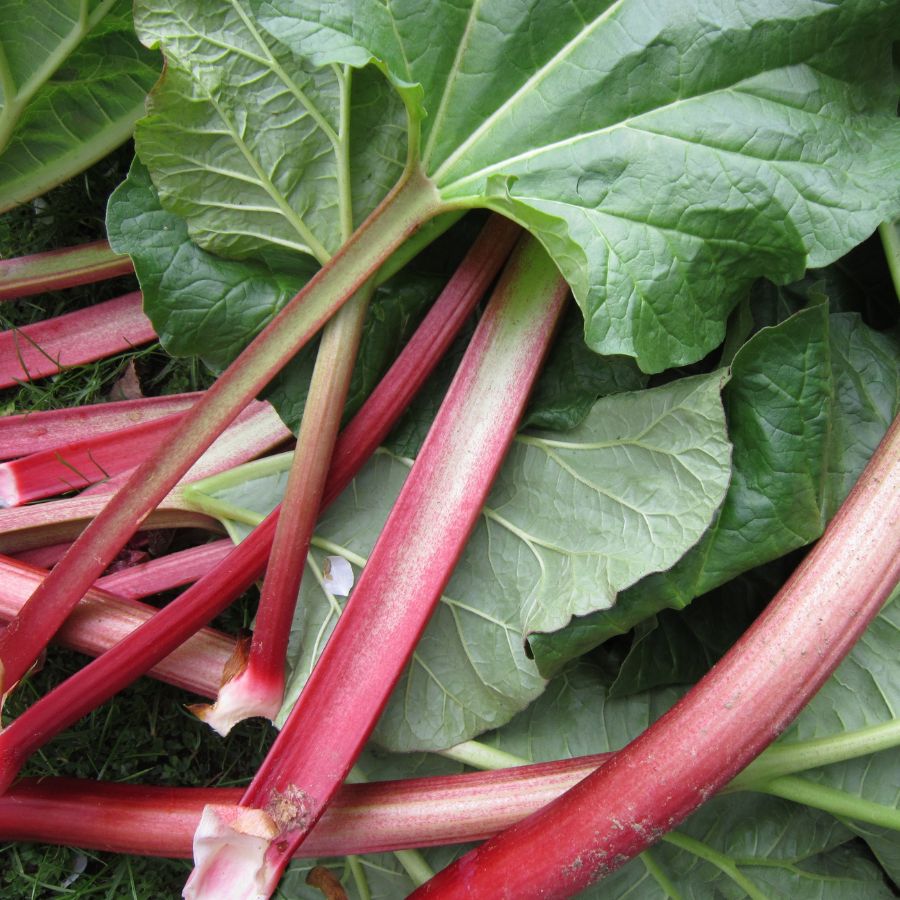
Just because a plant is edible doesn’t mean every part of it is safe. Some plants have leaves, stems, or seeds that can be toxic if eaten raw or prepared the wrong way.
For example, pokeweed is only safe when young and properly cooked, while elderberries need to be heated before eating. Rhubarb stems are fine, but the leaves are poisonous. Always look up which parts are edible and how they should be handled.
Avoid Foraging in Polluted or Contaminated Areas
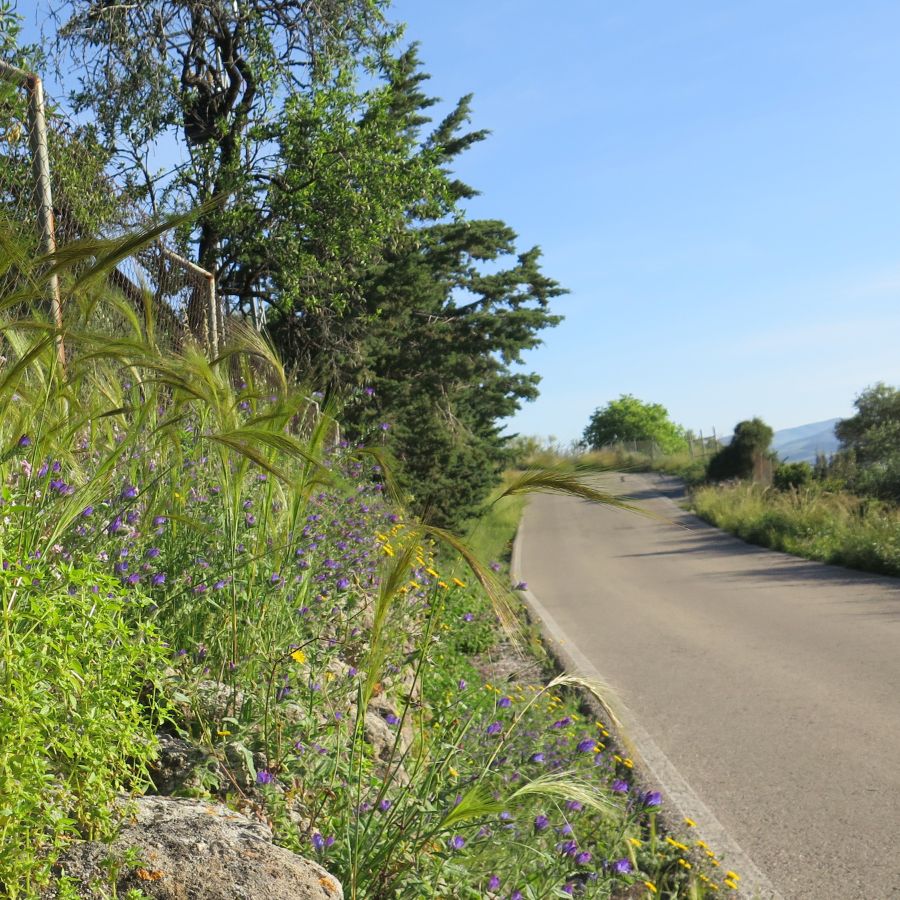
Where you forage matters just as much as what you pick. Plants growing near roads, buildings, or farmland might be coated in chemicals or growing in polluted soil.
Even safe plants can take in harmful substances from the air, water, or ground. Stick to clean, natural areas like forests, local parks that allow foraging, or your own yard when possible.
Don’t Harvest More Than What You Need
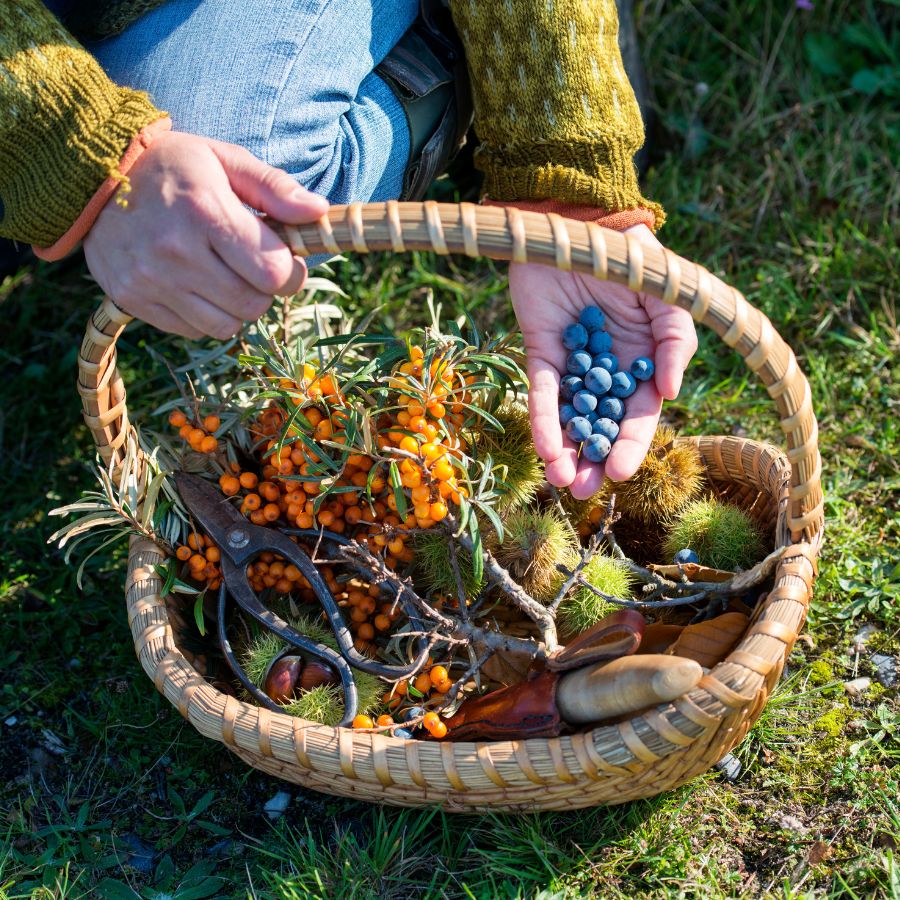
When you forage, take only what you plan to use. Overharvesting can hurt local plant populations and reduce future growth in that area.
Leaving plenty behind helps plants reproduce and supports wildlife that depends on them. It also ensures other foragers have a chance to enjoy the same resources.
Protect Yourself and Your Finds with Proper Foraging Gear
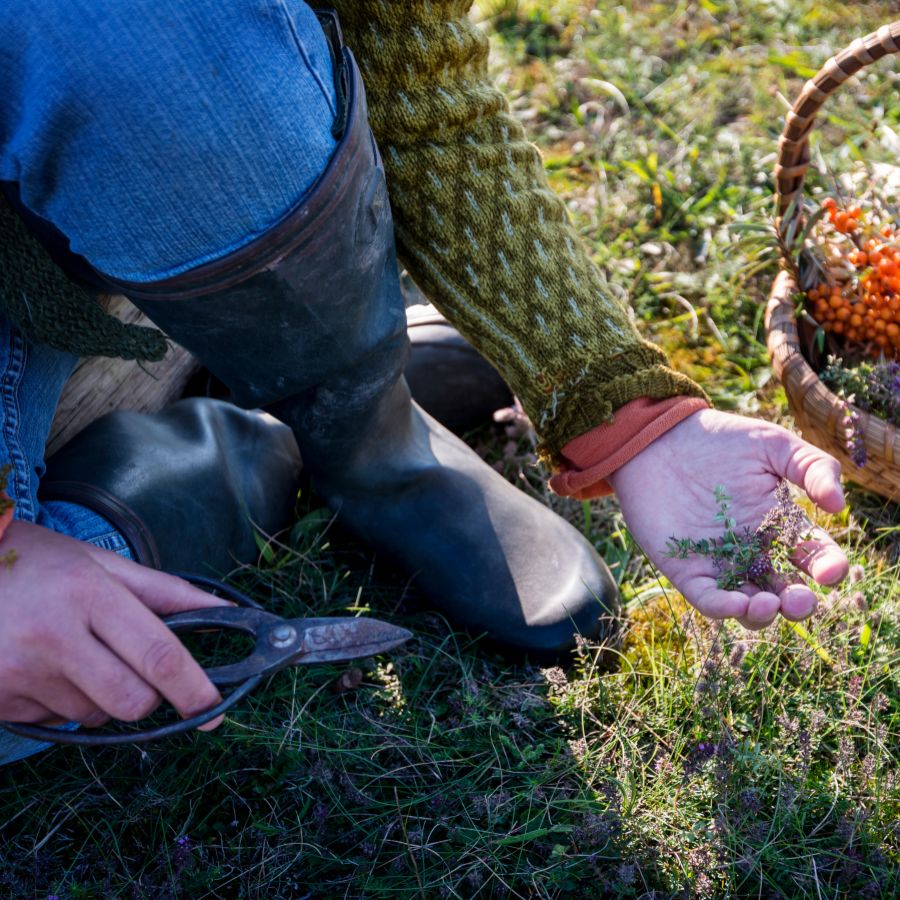
Having the right tools makes foraging easier and safer. Gloves protect your hands from irritants like stinging nettle, and a good knife or scissors lets you harvest cleanly without damaging the plant.
Use a basket or breathable bag to carry what you collect. Plastic bags hold too much moisture and can cause your greens to spoil before you get home.
This forager’s toolkit covers the essentials for any level of experience.
Watch for Allergic Reactions When Trying New Wild Foods
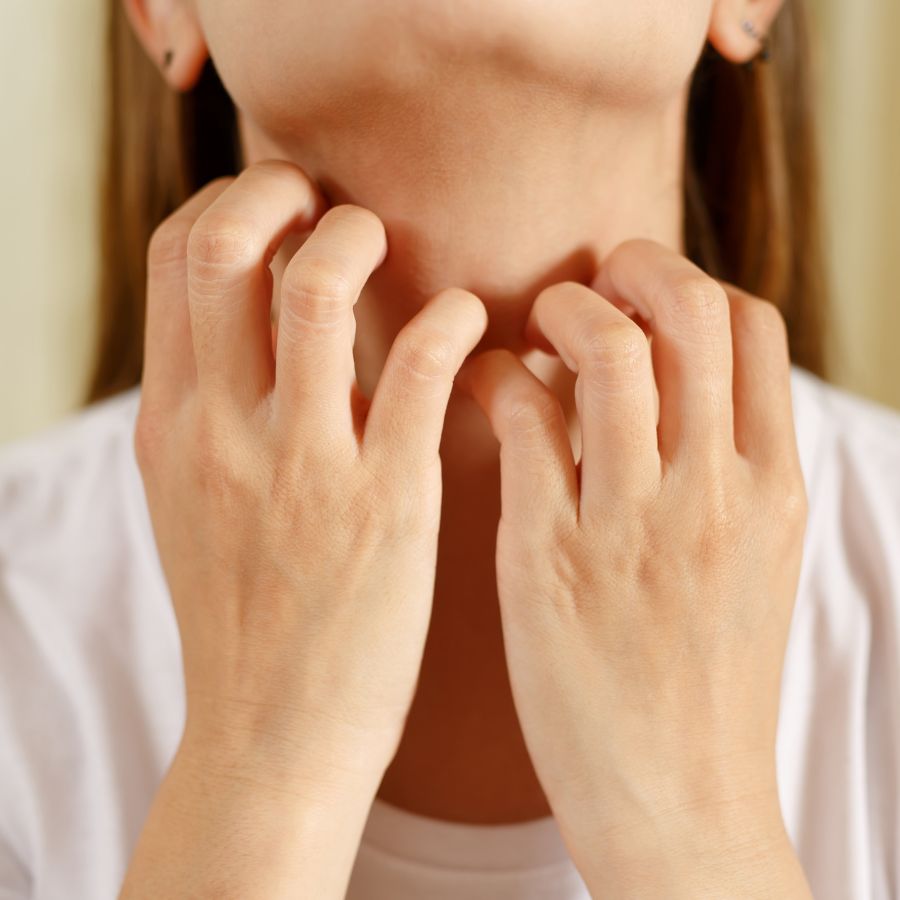
Even if a wild plant is safe to eat, your body might react to it in unexpected ways. It’s best to try a small amount first and wait to see how you feel.
Be extra careful with kids or anyone who has allergies. A plant that’s harmless for one person could cause a reaction in someone else.
Check Local Rules Before Foraging on Any Land
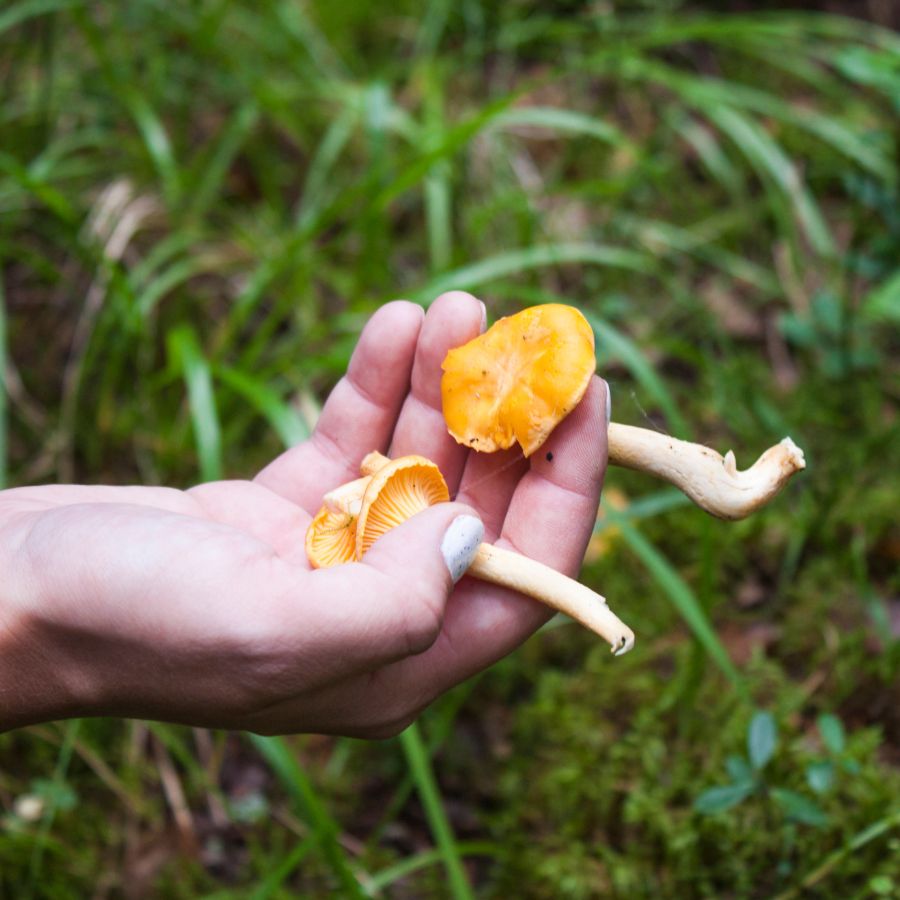
Before you start foraging, make sure you know the rules for the area you’re in. What’s allowed in one spot might be completely off-limits just a few miles away.
Some public lands permit limited foraging, while others, like national parks, usually don’t allow it at all. If you’re on private property, always get permission first.
Where to Find Forageables in the State
There is a range of foraging spots where edible plants grow naturally and often in abundance:
| Plant | Locations |
| American Beautyberry (Callicarpa americana) | Ocala National Forest, Big Cypress National Preserve, Blackwater River State Forest |
| Blackberry (Rubus spp.) | Osceola National Forest, Withlacoochee State Forest, Etoniah Creek State Forest |
| Elderberry (Sambucus nigra subsp. canadensis) | Apalachicola National Forest, Tosohatchee Wildlife Management Area, Okaloacoochee Slough State Forest |
| Mulberry (Morus rubra, Morus alba) | Ocala National Forest, Myakka River State Park, Jonathan Dickinson State Park |
| Persimmon (Diospyros virginiana) | Blackwater River State Forest, Ocala National Forest, Withlacoochee State Forest |
| Pawpaw (Asimina triloba) | Apalachicola National Forest, Withlacoochee State Forest, Big Shoals State Forest |
| Passionfruit (Passiflora incarnata) | Myakka River State Park, Highlands Hammock State Park, Wekiwa Springs State Park |
| Prickly Pear Cactus (Opuntia humifusa, Opuntia stricta) | Ocala National Forest, Kissimmee Prairie Preserve State Park, Big Cypress National Preserve |
| Groundnut (Apios americana) | Apalachicola National Forest, Tate’s Hell State Forest, Big Shoals State Forest |
| Purslane (Portulaca oleracea) | Osceola National Forest, Lake Kissimmee State Park, Jonathan Dickinson State Park |
| Lamb’s Quarters (Chenopodium album) | Withlacoochee State Forest, Tosohatchee Wildlife Management Area, Blackwater River State Forest |
| Chickweed (Stellaria media) | Etoniah Creek State Forest, Apalachicola National Forest, Withlacoochee State Forest |
| Dandelion (Taraxacum officinale) | Ocala National Forest, Blackwater River State Forest, Withlacoochee State Forest |
| Plantain (Plantago major, Plantago lanceolata) | Osceola National Forest, Big Shoals State Forest, Apalachicola National Forest |
| Sow Thistle (Sonchus oleraceus) | Ocala National Forest, Etoniah Creek State Forest, Blackwater River State Forest |
| Spanish Needles (Bidens alba) | Myakka River State Park, Wekiwa Springs State Park, Lake Louisa State Park |
| Shepherd’s Purse (Capsella bursa-pastoris) | Ocala National Forest, Withlacoochee State Forest, Etoniah Creek State Forest |
| Wild Mustard (Brassica juncea, Brassica nigra) | Blackwater River State Forest, Withlacoochee State Forest, Ocala National Forest |
| Wild Onion (Allium canadense) | Apalachicola National Forest, Osceola National Forest, Blackwater River State Forest |
| Wood Sorrel (Oxalis spp.) | Ocala National Forest, Withlacoochee State Forest, Myakka River State Park |
| Amaranth (Amaranthus retroflexus, Amaranthus spinosus) | Etoniah Creek State Forest, Apalachicola National Forest, Blackwater River State Forest |
| Cattail (Typha latifolia, Typha domingensis) | Big Cypress National Preserve, Everglades National Park (designated areas), Tosohatchee Wildlife Management Area |
| Peppergrass (Lepidium virginicum) | Ocala National Forest, Withlacoochee State Forest, Blackwater River State Forest |
| Watercress (Nasturtium officinale) | Apalachicola National Forest, Big Shoals State Forest, Etoniah Creek State Forest |
| Burdock (Arctium minus) | Osceola National Forest, Withlacoochee State Forest, Etoniah Creek State Forest |
| Daylily (Hemerocallis fulva) | Ocala National Forest, Withlacoochee State Forest, Blackwater River State Forest |
| Greenbriar (Smilax bona-nox, Smilax rotundifolia) | Big Cypress National Preserve, Apalachicola National Forest, Withlacoochee State Forest |
| Wild Garlic (Allium vineale) | Apalachicola National Forest, Osceola National Forest, Withlacoochee State Forest |
| Wild Lettuce (Lactuca canadensis) | Blackwater River State Forest, Ocala National Forest, Withlacoochee State Forest |
| Yucca (Yucca filamentosa) | Ocala National Forest, Big Cypress National Preserve, Myakka River State Park |
| Coral Honeysuckle (Lonicera sempervirens) | Wekiwa Springs State Park, Lake Kissimmee State Park, Myakka River State Park |
| Wild Grape (Vitis rotundifolia, Vitis aestivalis) | Ocala National Forest, Blackwater River State Forest, Big Shoals State Forest |
| Beautyberry (Callicarpa americana) | Blackwater River State Forest, Ocala National Forest, Apalachicola National Forest |
| Maypop (Passiflora incarnata) | Tosohatchee Wildlife Management Area, Myakka River State Park, Wekiwa Springs State Park |
| Tallow Plum (Ximenia americana) | Everglades National Park, Big Cypress National Preserve, Fakahatchee Strand Preserve State Park |
| Sea Grape (Coccoloba uvifera) | Jonathan Dickinson State Park, John Pennekamp Coral Reef State Park, Bill Baggs Cape Florida State Park |
| Cabbage Palm (Sabal palmetto) | Everglades National Park, Big Cypress National Preserve, Apalachicola National Forest |
Peak Foraging Seasons
Different edible plants grow at different times of year, depending on the season and weather. Timing your search makes all the difference.
Spring
Spring brings a fresh wave of wild edible plants as the ground thaws and new growth begins:
| Plant | Months | Best Weather Conditions |
| Mulberry (Morus rubra, Morus alba) | March–May | Mild temperatures, occasional rain |
| Coral Honeysuckle (Lonicera sempervirens) | March–June | Mild, sunny days |
| Daylily (Hemerocallis fulva) | April–June | Mild, sunny weather |
| Greenbriar (Smilax bona-nox, Smilax rotundifolia) | March–October | Warm, moist forest edges |
| Wood Sorrel (Oxalis spp.) | March–October | Mild to warm weather with some rain |
| Blackberry (Rubus spp.) | April–June | Mild to warm, sunny with occasional rain |
| Cattail (Typha latifolia, Typha domingensis) | March–July | Wetland areas, warm temperatures |
| Lamb’s Quarters (Chenopodium album) | April–July | Warm, sunny, and dry periods |
| Purslane (Portulaca oleracea) | April–August | Hot, sunny weather |
| Wild Lettuce (Lactuca canadensis) | April–July | Warm, slightly damp conditions |
Summer
Summer is a peak season for foraging, with fruits, flowers, and greens growing in full force:
| Plant | Months | Best Weather Conditions |
| Elderberry (Sambucus nigra subsp. canadensis) | May–July | Warm, humid weather |
| Yucca (Yucca filamentosa) | May–July | Hot, dry to moderately dry weather |
| Pawpaw (Asimina triloba) | August–September | Warm, slightly humid |
| Amaranth (Amaranthus retroflexus, Amaranthus spinosus) | June–August | Hot, dry to moderately humid conditions |
| Maypop (Passiflora incarnata) | June–August | Warm, sunny days |
| Prickly Pear Cactus (Opuntia humifusa, Opuntia stricta) | June–August | Hot, dry conditions |
| Tallow Plum (Ximenia americana) | June–August | Hot, tropical conditions |
| American Beautyberry (Callicarpa americana) | July–October | Warm, humid days after rain |
| Sea Grape (Coccoloba uvifera) | July–October | Hot, coastal sunny weather |
| Wild Grape (Vitis rotundifolia, Vitis aestivalis) | July–September | Warm, sunny, slightly humid |
Fall
As temperatures drop, many edible plants shift underground or produce their last harvests:
| Plant | Months | Best Weather Conditions |
| Groundnut (Apios americana) | September–November | Cool, moist soil conditions |
| Persimmon (Diospyros virginiana) | September–November | Dry, warm fall days |
| Dandelion (Taraxacum officinale) | October–April | Cool, moist weather |
| Peppergrass (Lepidium virginicum) | October–April | |
| Sow Thistle (Sonchus oleraceus) | October–April | |
| Watercress (Nasturtium officinale) | October–April |
Winter
Winter foraging is limited but still possible, with hardy plants and preserved growth holding on through the cold:
| Plant | Months | Best Weather Conditions |
| Wild Mustard (Brassica juncea, Brassica nigra) | December–March | Cool, sunny weather |
| Chickweed (Stellaria media) | December–March | Cool, moist conditions |
| Shepherd’s Purse (Capsella bursa-pastoris) | December–March | |
| Burdock (Arctium minus) | December–April | |
| Wild Garlic (Allium vineale) | January–April | |
| Wild Onion (Allium canadense) | January–April |
Year-round
Florida’s mild climate allows a variety of edible plants to grow and be foraged year-round, offering reliable options no matter the season:
| Plant | Months | Best Weather Conditions |
| Cabbage Palm (Sabal palmetto) | All year | Warm, humid coastal areas |
| Plantain (Plantago major, Plantago lanceolata) | All year | Moist soil, partial sun |
| Spanish Needles (Bidens alba) | All year | Warm, sunny weather |
One Final Disclaimer
The information provided in this article is for general informational and educational purposes only. Foraging for wild plants and mushrooms involves inherent risks. Some wild plants and mushrooms are toxic and can be easily mistaken for edible varieties.
Before ingesting anything, it should be identified with 100% certainty as edible by someone qualified and experienced in mushroom and plant identification, such as a professional mycologist or an expert forager. Misidentification can lead to serious illness or death.
All mushrooms and plants have the potential to cause severe adverse reactions in certain individuals, even death. If you are consuming foraged items, it is crucial to cook them thoroughly and properly and only eat a small portion to test for personal tolerance. Some people may have allergies or sensitivities to specific mushrooms and plants, even if they are considered safe for others.
Foraged items should always be fully cooked with proper instructions to ensure they are safe to eat. Many wild mushrooms and plants contain toxins and compounds that can be harmful if ingested.

